Vanilla Apple Pie, a recipe inspired by visits to Clifden and the island of Inishmore in Ireland. Read about our travels and then try a slice of this delicious, fragrant pie!
This post contains affiliate links and I may earn a small commission when you click on the links at no additional cost to you. You can read my full disclaimer here.
After a wild drive along the Wild Atlantic Way, we had a warming dinner and dessert in Clifden, the inspiration for my Vanilla Apple Pie. The next day we explored the fascinating island of Inishmore.
The recipe is first, then find stories of this leg of our Ireland journey, through Clifden and Inishmore, right after the recipe.
Jump to:
Vanilla Apple Pie
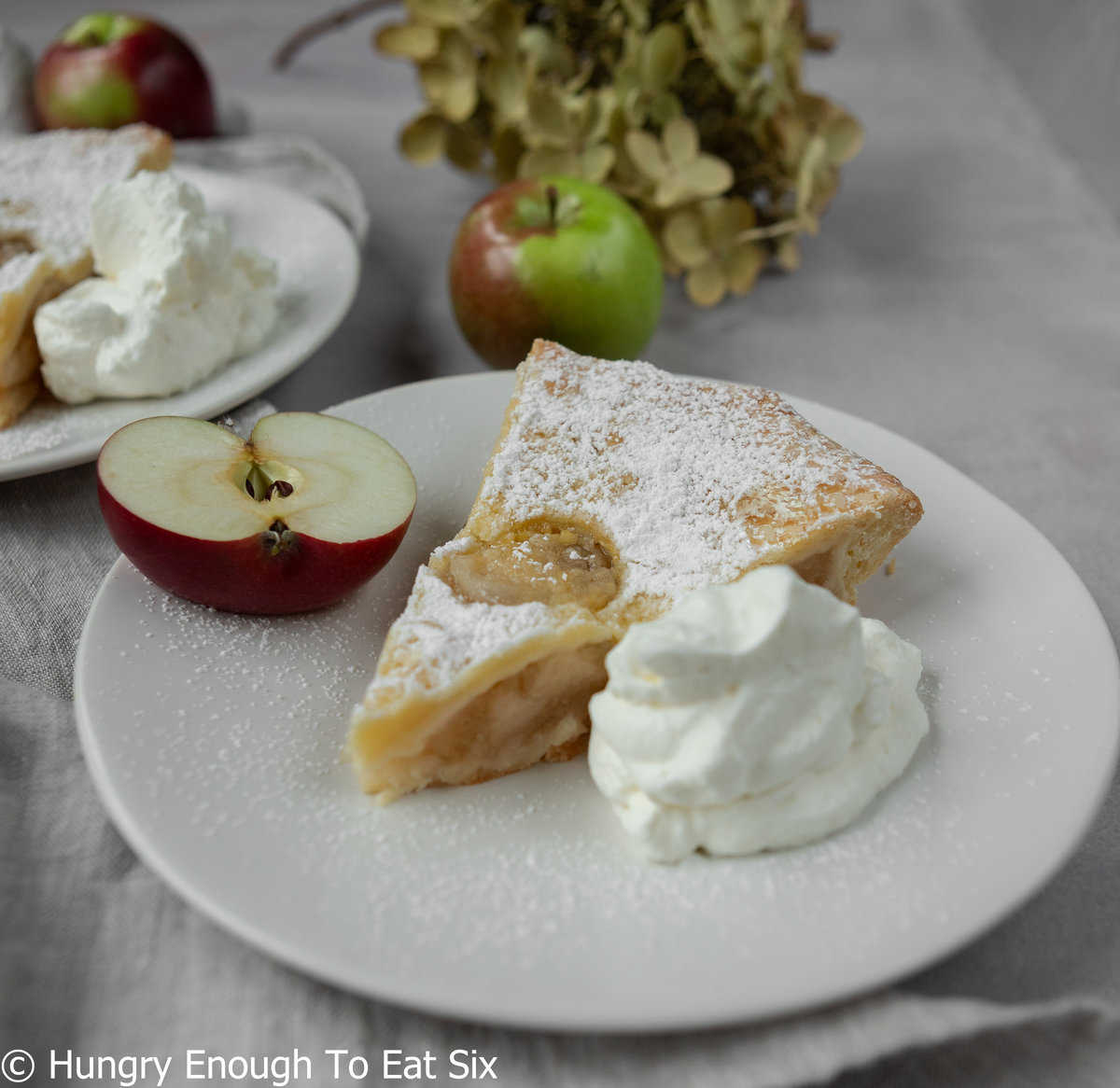
This recipe was inspired by my dessert at E.J. King's in Clifden, Ireland: a homemade apple pie flavored with lots of vanilla and held in a sweet, tender crust.
Why you'll love this recipe
It seems like everyone loves apple pie, a favorite any time of the year but especially in the fall and for the holidays. What everyone will REALLY love about this recipe is the unique flavor.
Instead of the usual apple pie spices like cinnamon and nutmeg, this pie is chock full of vanilla extract. It's so delicious blended with sliced apples and baked up in a sweet pastry crust.
Serve slices of the vanilla pie with whipped cream, a drizzle of cremè anglaise, or a big scoop of ice cream—vanilla ice cream, of course!
I fell in love with this vanilla apple pie when I tasted a slice in Ireland, and I know you will love it, too!
You can also make this pie with my Best-Loved Flaky Pie Crust.
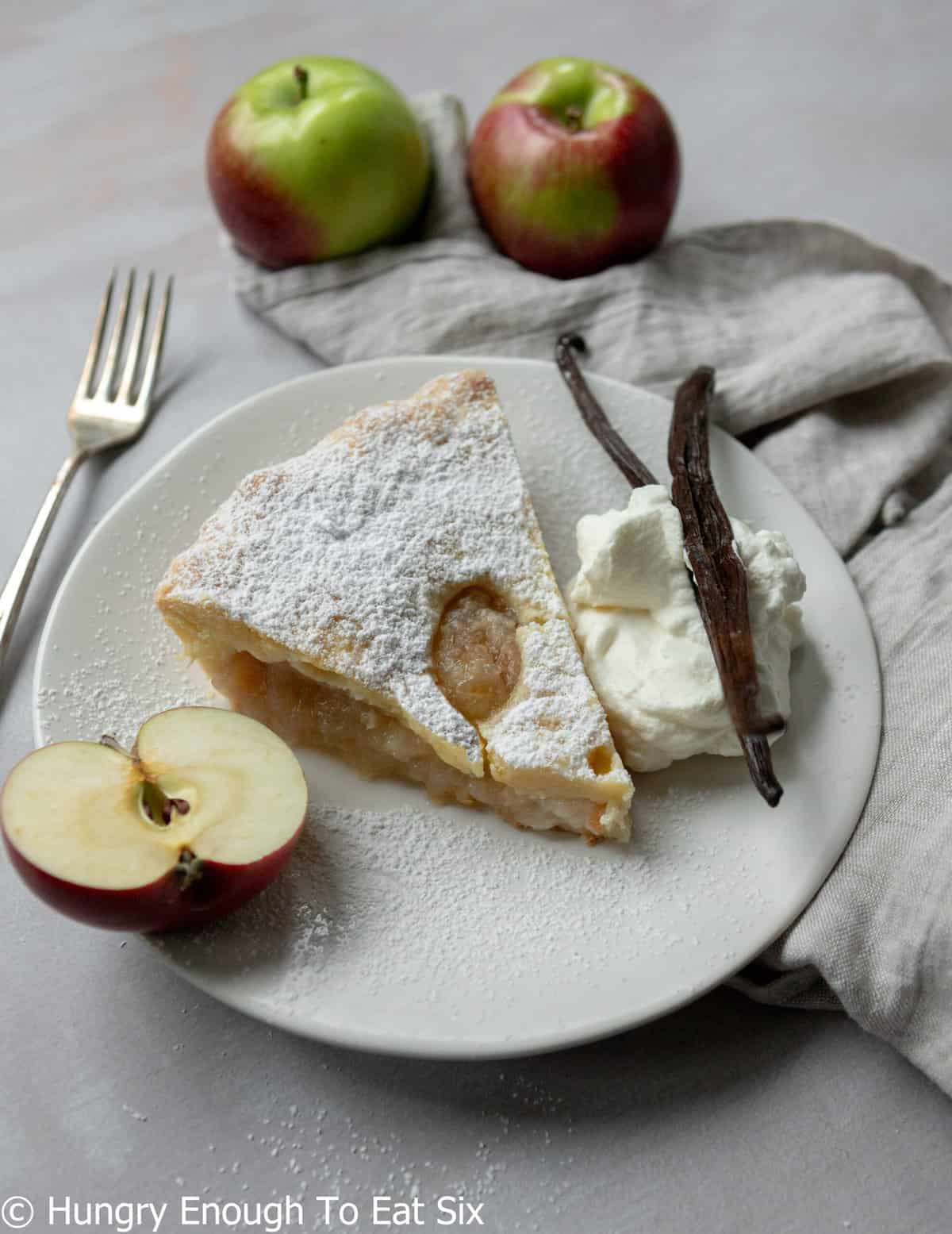
Is vanilla good in apple pie?
I understand why you might be wondering about this. For the most part, traditional apple pie recipes either don't include vanilla extract or just have a tiny bit, with the strongest flavor coming from warming spices like cinnamon and nutmeg.
However, this Vanilla Apple Pie is unique: the flavor is a balance of tart apples and lots of pure vanilla. Do they go well together? Oh yes, it's a remarkably delicious combination.
Without the strong spices, the sweet and tart flavors of the apples shine through. When you add pure vanilla extract to the apple pie, it highlights these flavors in a way that feels soft, luscious, and delectable.
Since vanilla is so prominent in the apple pie filling, use a good-quality extract of pure vanilla. Nielsen-Massey Vanilla Extract is a brand I use very often.
🔪 How to make Vanilla Apple Pie
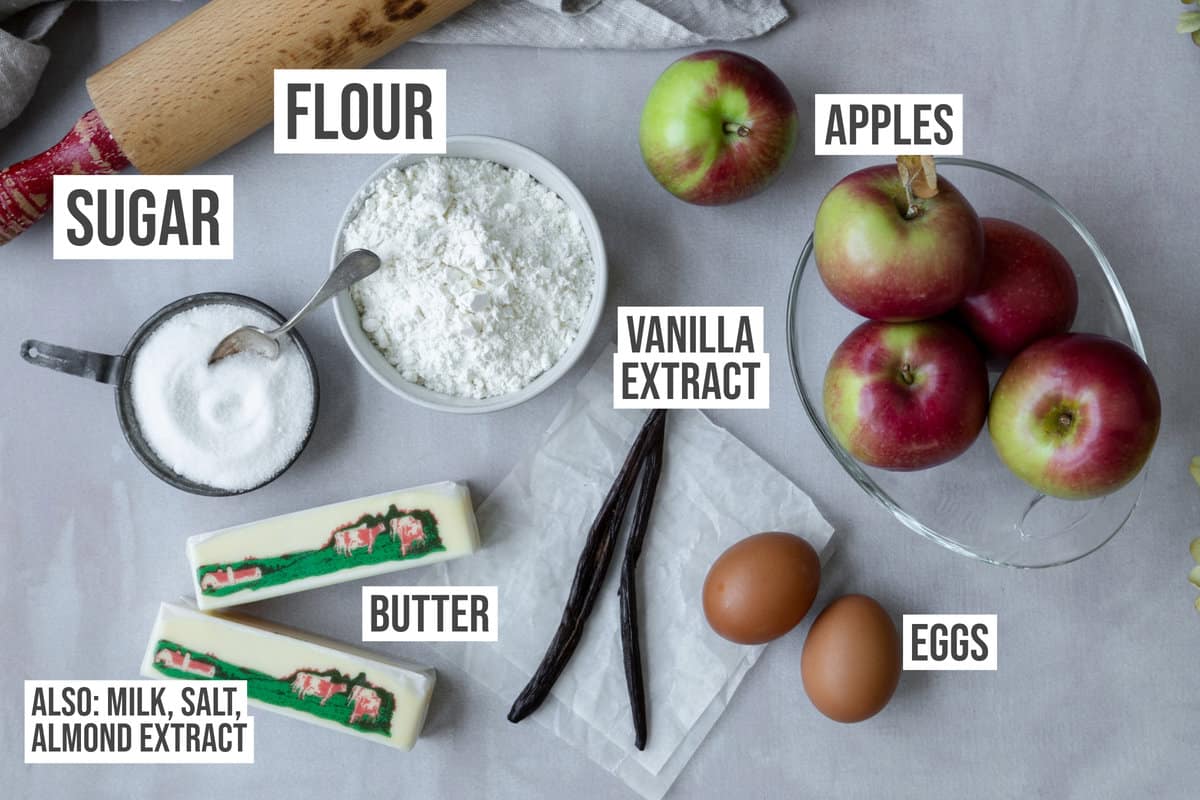
Ingredients:
- All-Purpose Flour: My go-to brand is King Arthur Flour
- Salt: for flavor in the crust and filling
- Butter: To make the tasty pie crust
- Sugar: Granulated sugar for both the crust and filling
- Eggs: They're used to make a tender crust
- Milk: Also in the crust
- Apples: I use varieties like McIntosh and Honeycrisp
- Vanilla Extract: It's such a pronounced flavor, so use a good one like Nielsen-Massey
- Almond Extract: Just a little for a nice accent to the apples and vanilla
Step 1: Make the crust
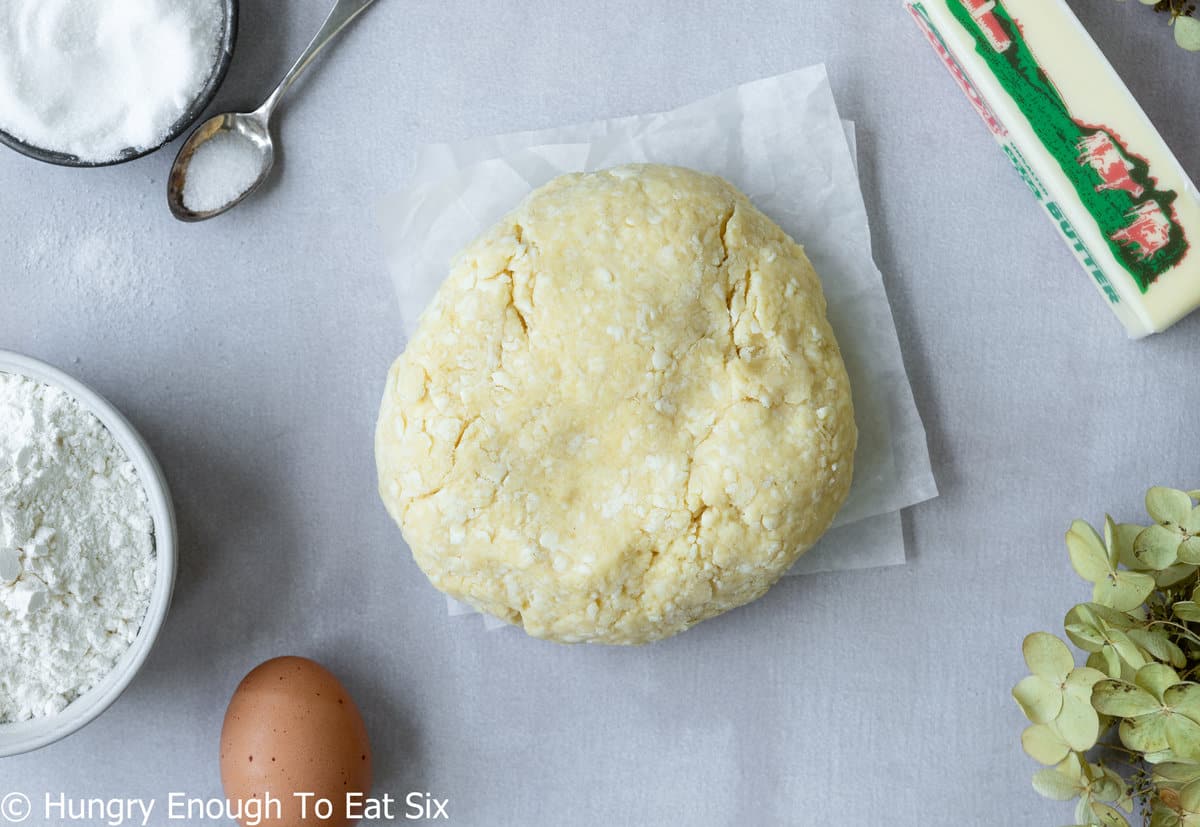
Blend together flour, salt, sugar, and butter to make the sweet, pie crust dough. Chill the dough while you make the filling.
Step 2: Prepare the filling
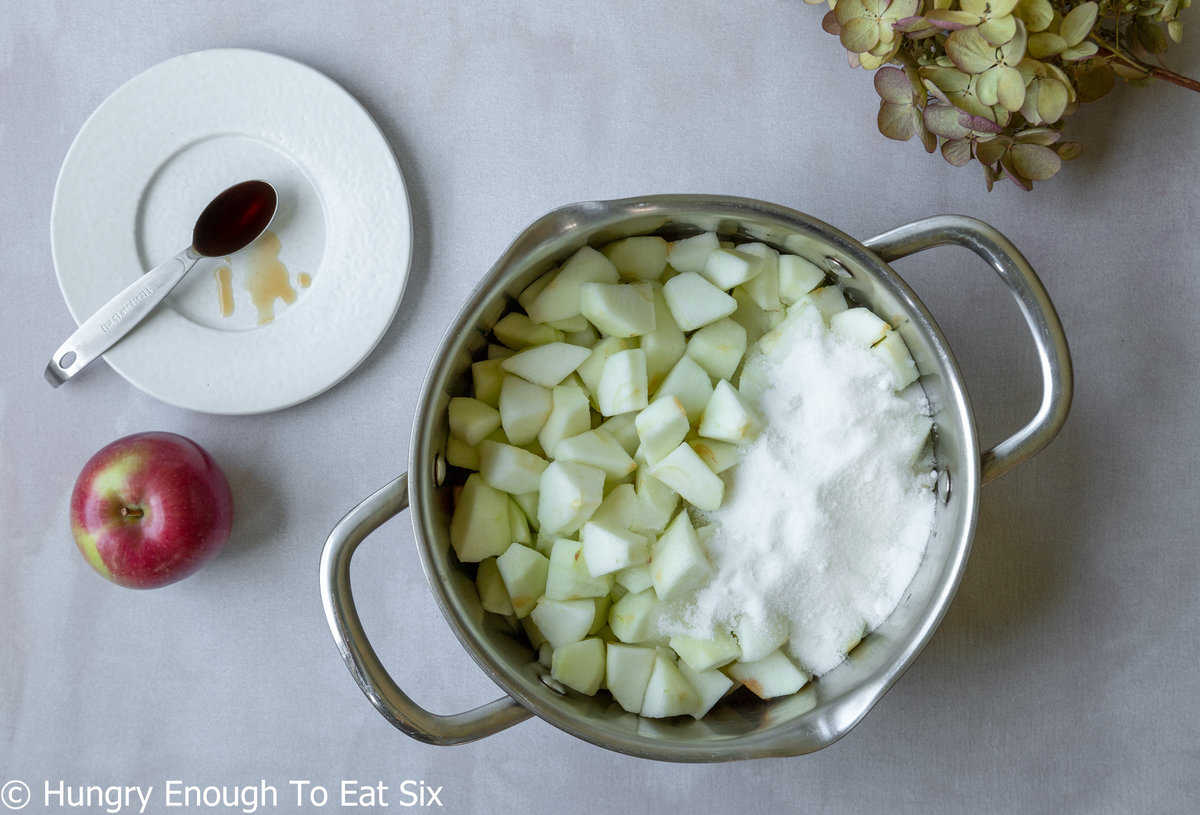
Peel and slice sweet-tart McIntosh apples. Cook the apple slices down on the stovetop with sugar, then put in the vanilla extract. Allow the filling to cool to room temperature.
Step 3: Assemble the pie
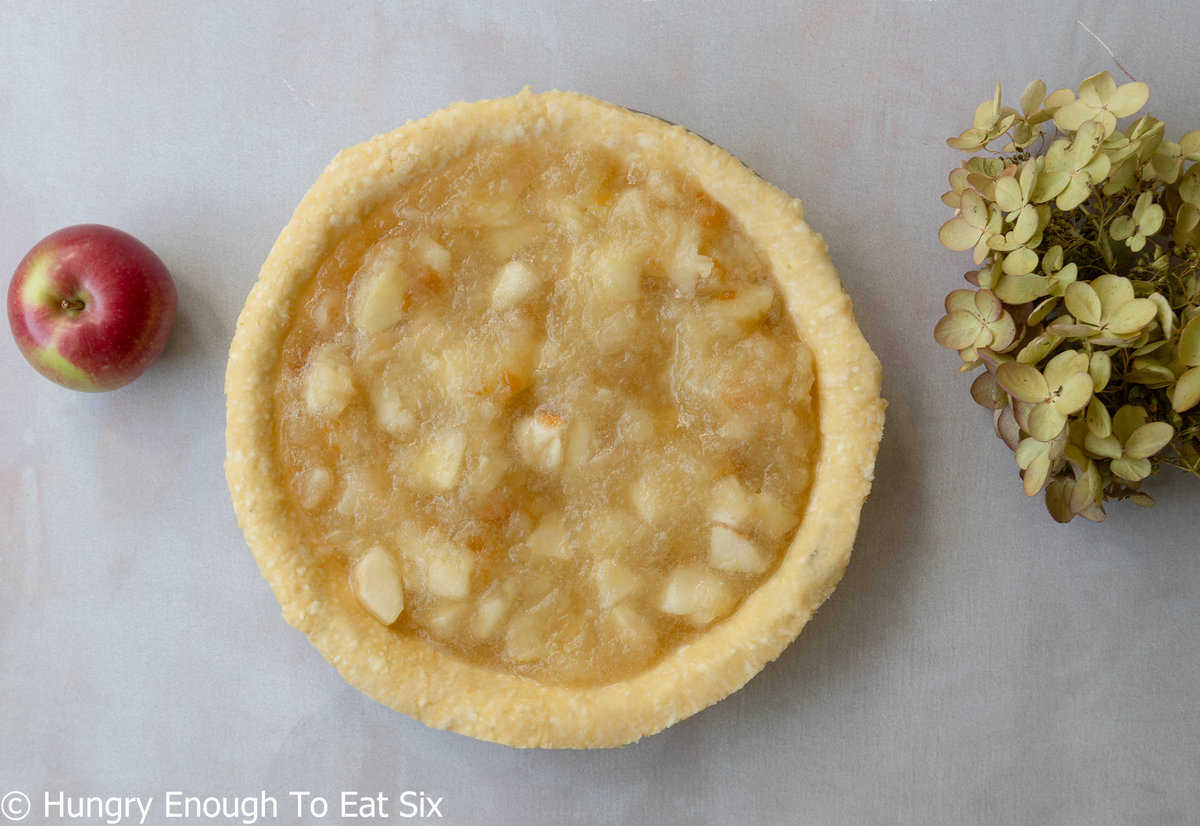
Roll out half of the sweet dough to create the bottom crust. Fit this into the pie pan. Then pour the filling into the bottom crust.
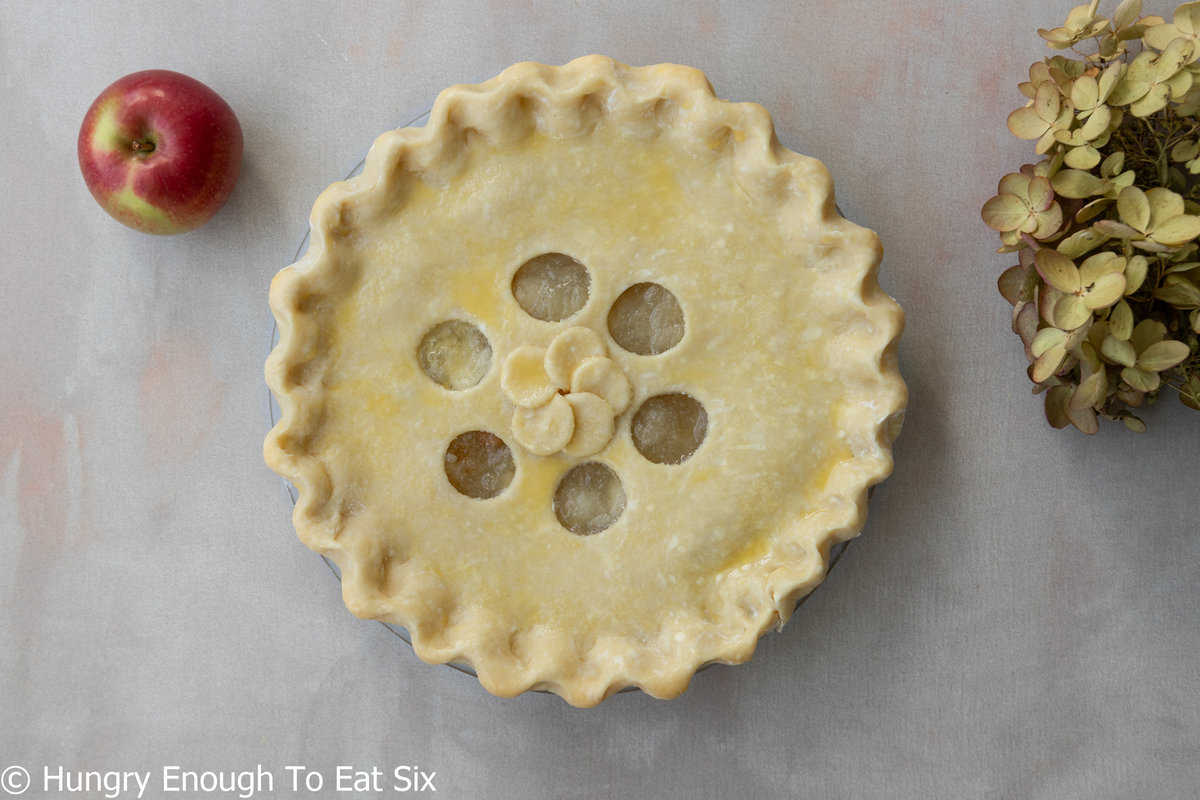
Roll out the second half of the dough and cut the circle for the top crust. Fit the top crust onto the pie, tucking and rolling the edges before crimping them down. Refrigerate the pie for 30 minutes while the oven preheats.
Step 4: Bake the pie
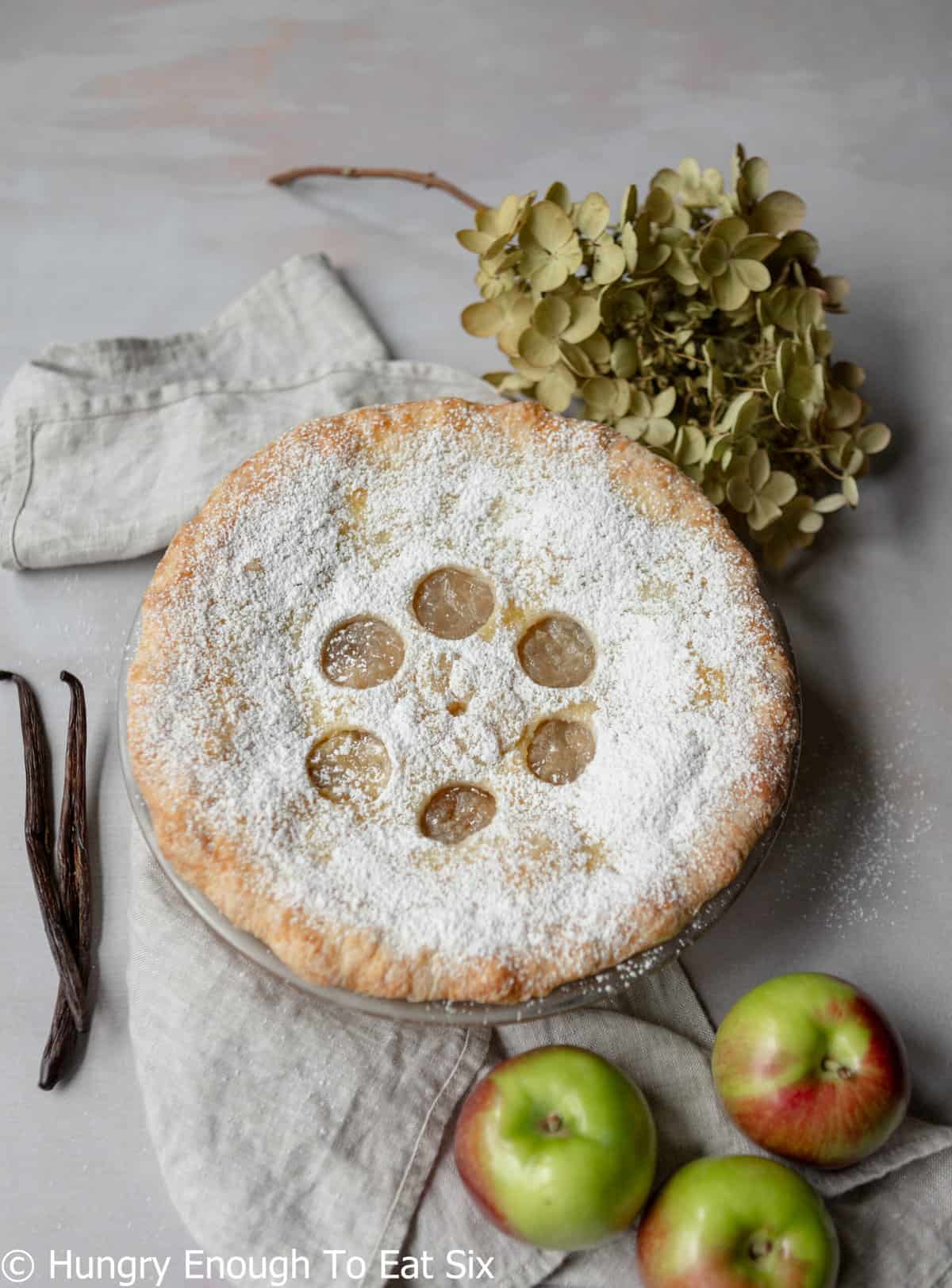
Preheat the oven to 375°F. Cut a few slashes in the top of the chilled pie. Bake the pie for about 45 minutes. Allow it to cool a bit before slicing.
Another favorite pie is this Salted Caramel Chocolate Cream Pie.
FAQ
This recipe uses a sweet, tender recipe that recreates the pie crust I had with this pie filling in Ireland. It would also be very tasty with a flaky butter crust—you can use my Best-Loved Flaky Pie Crust recipe.
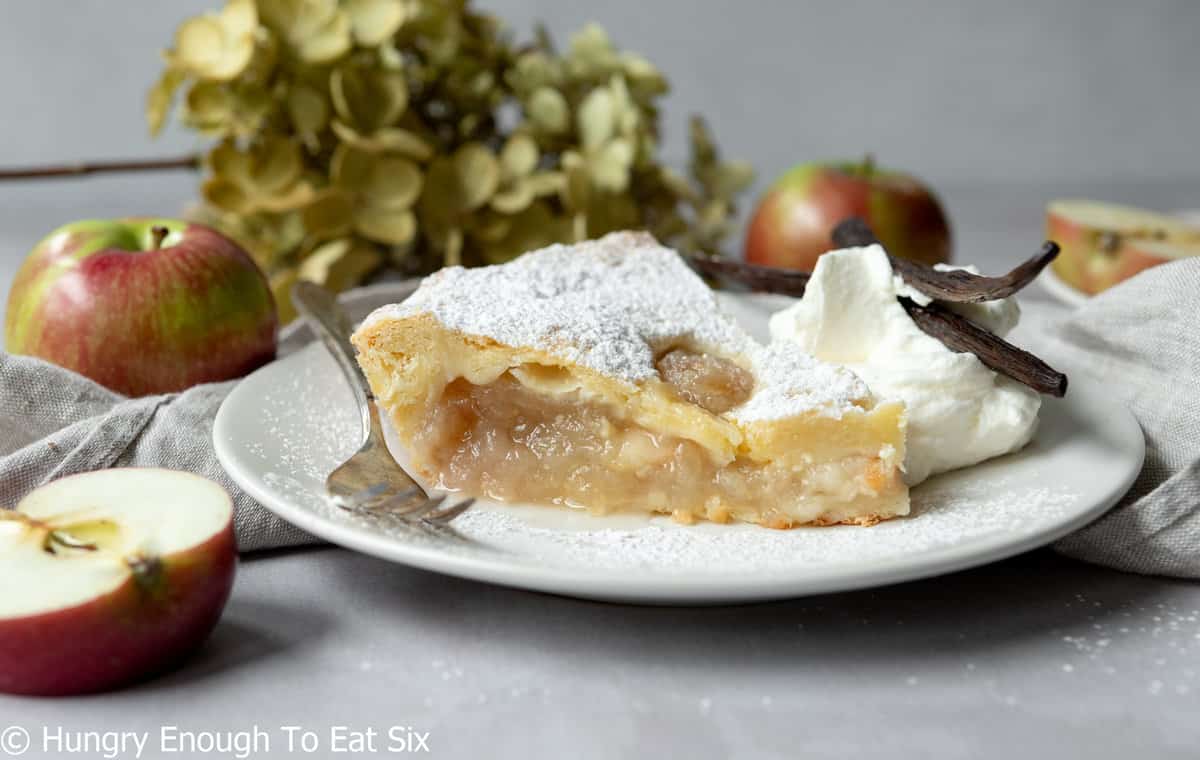
The Vanilla Apple Pie recipe is below, and here are more recipes inspired by travel in Ireland:
💬 Have you tried a slice of Vanilla Apple Pie? Leave a comment below.
📖 Recipe
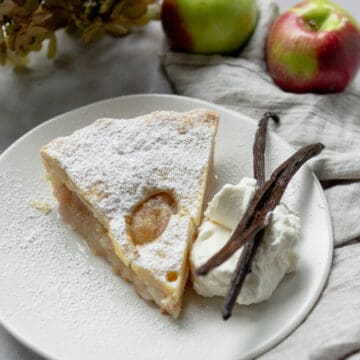
Vanilla Apple Pie
Ingredients
For the pie crust:
- 2½ cups all-purpose flour (plus extra for kneading and work surfaces)
- ½ teaspoon salt
- 1 cup very cold, unsalted butter
- ¼ cup granulated sugar
- 2 large eggs
- ¼ cup milk
For the filling:
- 2 teaspoons salt
- 3½ pounds apples such as McIntosh, Honeycrisp, Granny Smith, or a combination of these varieties
- 1 cup granulated sugar
- 2 teaspoons pure vanilla extract, divided
- ¼ teaspoon almond extract
- Powdered sugar for dusting
Instructions
Make the crust:
- Stir together the flour and the ½ teaspoon of the salt in a large bowl. Hold this aside.
- Slice the cold butter into small cubes.
- Add the cubed cold butter, the ¼ cup of sugar, and the flour mixture to the bowl of a food processor. Pulse the machine to just combinethe ingredients. (You can also a stand mixer.)
- Add in the eggs one at a time and pulse the food processor to blend them into the butter-flour mixture, scraping down the bowl once they're both in. Mix in the milk until the batter is lumpy like cottage cheese.
- Lightly flour a work surface and turn out the contents of the bowl. Squeeze the dough together and knead just a few times until the dough comes together. (A bench scraper is helpful here.) Do not overwork it or the crust will be too tough.
- Split the dough in half, flatten each half with your hand and wrap the dough portions in plastic wrap. Place them in the fridge for an hour.
In the meantime make the filling:
- Run about 4 cups of cold water into a large bowl. Stir in the 2 teaspoons of salt until it's dissolved. (This will be for the cut apples to prevent them from turning brown.)
- Peel and core each apple, and slice the apples into 1-inch chunks. As you cut the apples place the chunks into the salt water and stir them around so that all sides get wet.
- Have a large saucepan ready on the stovetop. When the apples are all cut, drain them in a colander and rinse off all of the saltwater. Place the apples in the saucepan.
- Add in the 1 cup of sugar and 1 teaspoon of the vanilla extract. Heat the contents over medium heat until the apples begin to simmer.
- Stir and simmer the apples for about 8 minutes until the apples have softened but still have a little bite in them. Remove the pan from the heat and allow the apple mixture to cool to room temperature. There will be some liquid: that's okay.
Assemble the pie:
- Preheat oven to 375° F. Place a metal baking sheet in the oven (large enough to hold the pie dish.)
- Have ready a 9-inch pie plate. I prefer a metal pie plate as they cook the bottom of the pie better. If using a glass or ceramic pie pie plate, move the oven rack down one level.
- Take one disk of dough from the fridge. On a lightly floured surface roll out the dough to about a 12-inch circle, ¼-inch thick. (This dough tends to be a little sticky; sprinkle flour on the board and rolling pin to help with this.)
- Use your rolling pin to help lift the crust into the pie plate. Press the dough into the bottom and up the sides, allowing a 1-inch overhang.
- Stir the remaining teaspoon of vanilla extract and the almond extract into the apple mixture. Spoon the apples and liquid into the pie crust and spread them to an even layer.
- Roll out the second dough disk on a lightly floured surface to 12 inches in diameter, ¼-inch thick. Lift the dough carefully to the top of the pie. Trim the edge to be just a little longer than the bottom edge, then roll the top edge underneath the bottom edge all around. (If it's too thick in a spot, trim it back a little.) Crimp the edge all around.
- Cut a few slashes or cutouts into the top crust to vent the pie. Cover the top loosely with plastic wrap and pop it in the freezer for 5 minutes.
Bake that pie:
- Place the pie in the oven on the hot baking sheet. Bake it for about 45-55 minutes, until the top crust is light, golden brown color.
- Remove the pie and place it on a cooling rack. Move it to a cool spot in the kitchen or a porch.
- Now here's the hard part: let the pie cool completely! If it's cut while warm, the filling will run out.
- Dust the top of the pie generously with powdered sugar. Slice the pie and serve it with fresh whipped cream, ice cream, or crème anglaise.
- Note: this pie can also be made with the flaky Best-Loved Flaky Pie Crust Recipe. It is less sweet than the crust above and flakier.
Notes
- This pie dough is a sweet pâté sucrée which results in a more tender crust that's delicious with this filling. Another great dough is my Best-Loved Flaky Pie Crust recipe: less sweet and flakier. Both crusts are wonderful choices for this flavorful filling.
Nutrition
Travels In Ireland: Taking The Wild Atlantic Way to Clifden
The first half of the route was fairly uneventful, taking N17 and N5 toward the coast until we reached the town of Westport. Here our pace was reduced to snail-like as we navigated the charmingly narrow streets of this popular little town.
(We actually did circles through town because I had trouble catching the left turn out. I began to feel like Clark Griswold in National Lampoon's European Vacation. [maniacal laughter] "I cannot get left!!")
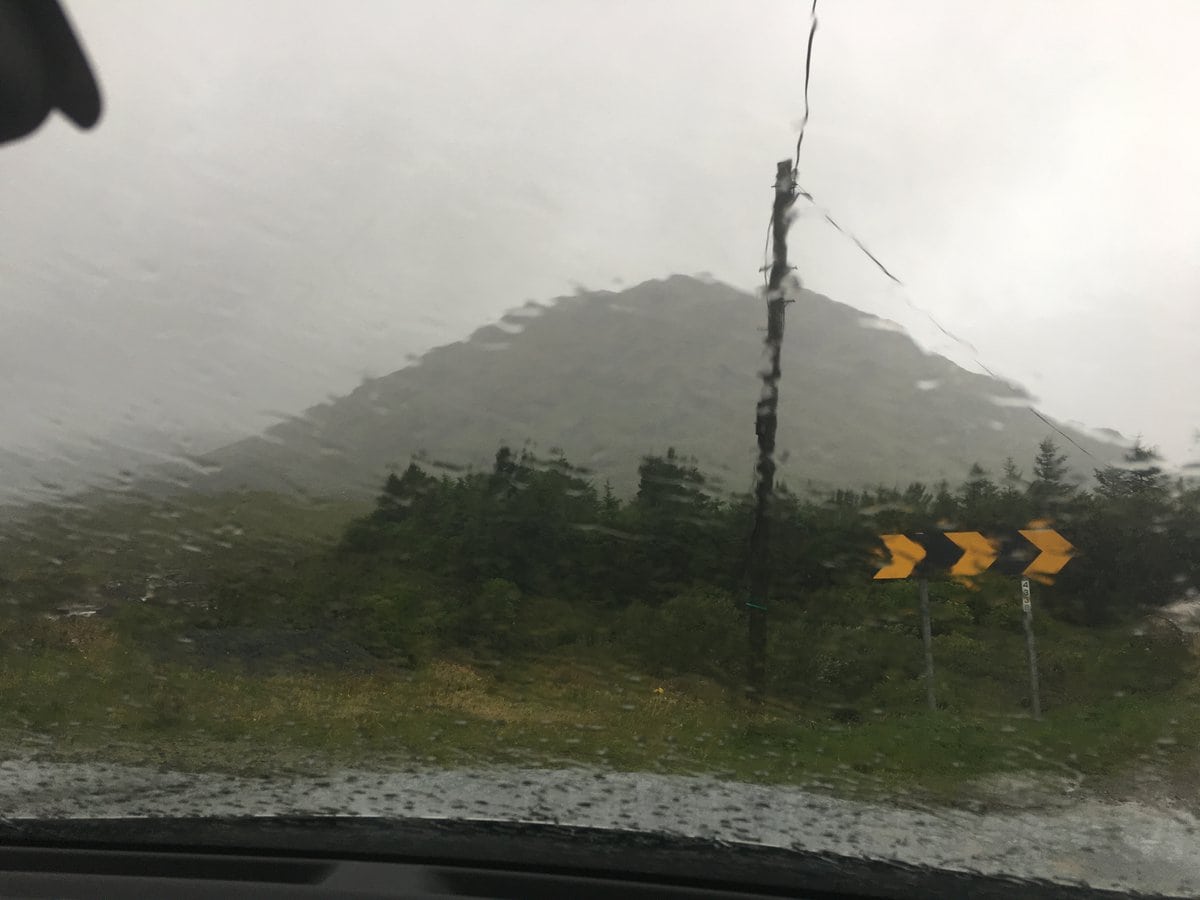
It was in Westport that we picked up the Wild Atlantic Way, a 2,500 km scenic route along the western coast of Ireland. It was also at that point that it began to rain: a really heavy, steady downpour of rain. Although the speed was posted in several places as 100 kph (about 62 mph) there were many stretches where I could not go faster than 40 or 50 kph. I felt like I was in a scene in an old movie, turning my steering wheel dramatically from left to right to navigate the curvy road.
From what I could glimpse through the rain and white knuckles, the scenery was gorgeous. The WAW takes you along cliffs and coasts, bays and inlets. The road was tight in several spots, and we saw lots of sheep just hanging by the side of the road—and around a few bends, some sheep in the road.
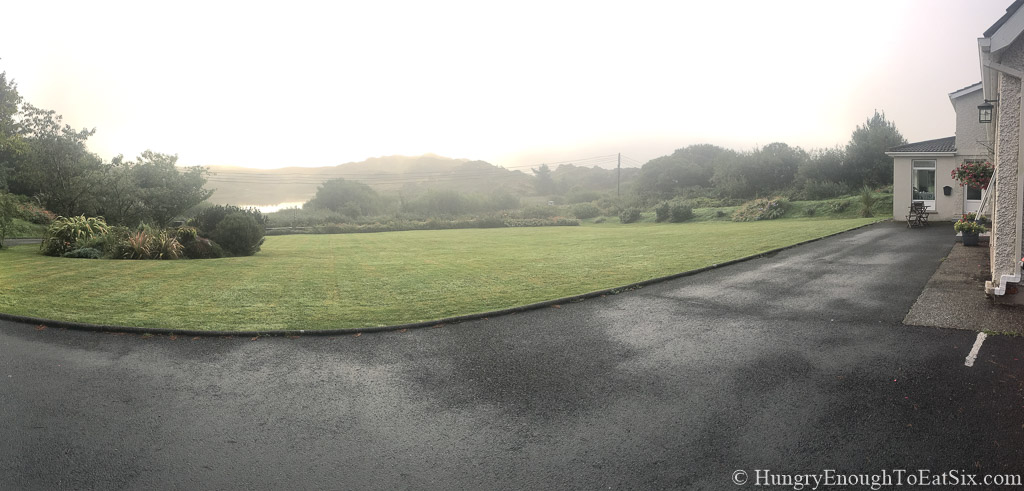
It was approaching dusk when we reached our B&B in Clifden: the Heather Lodge, tucked into the side of a hill. Inside it was plush and comfy with overstuffed armchairs, thick-carpeting underfoot, and a billiards room just off the hall.
We didn't have much time to relax though. We were starving and the owner told us we should get into town quickly before restaurants closed. So back out into the rain we went.
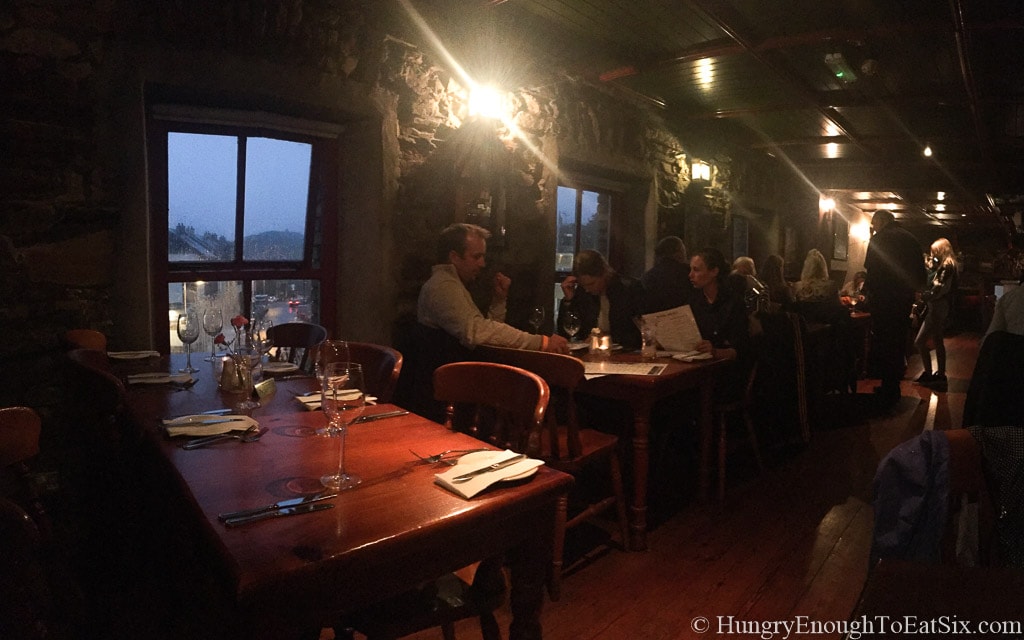
In downtown Clifden, we eventually settled in E.J. King's in a gorgeous restaurant space with stone and wood walls on the second floor above their bar. We had walked a ways in the rain and were drenched, so the waitress kindly seated us under a heater. (Another patron told us we were "lucky suckers".)
She gave us plenty of hot tea and buttered brown bread! (Tap here to see my recipe for Irish Brown Bread!)
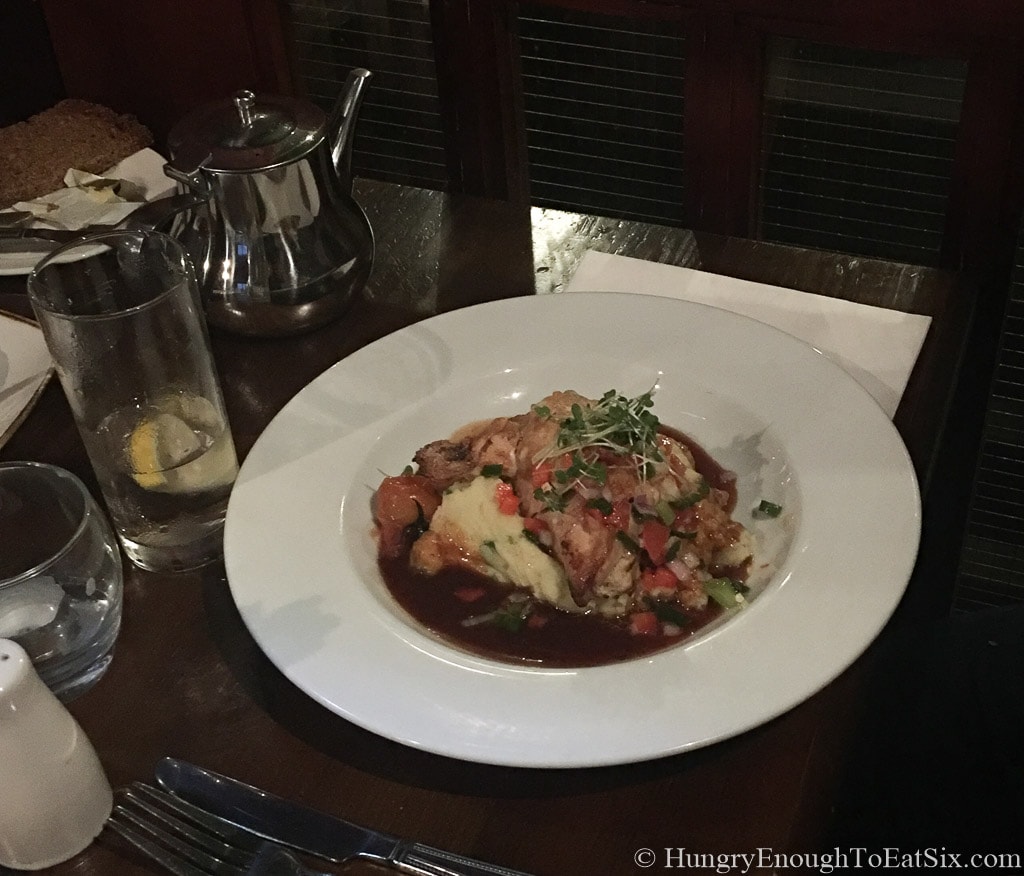
My sister had chicken breast stuffed with cream cheese and spinach in red wine au jus, with chive mashed potatoes. My mother and I had a silky gratin of butternut squash and sweet potato topped with melted Gruyere cheese.
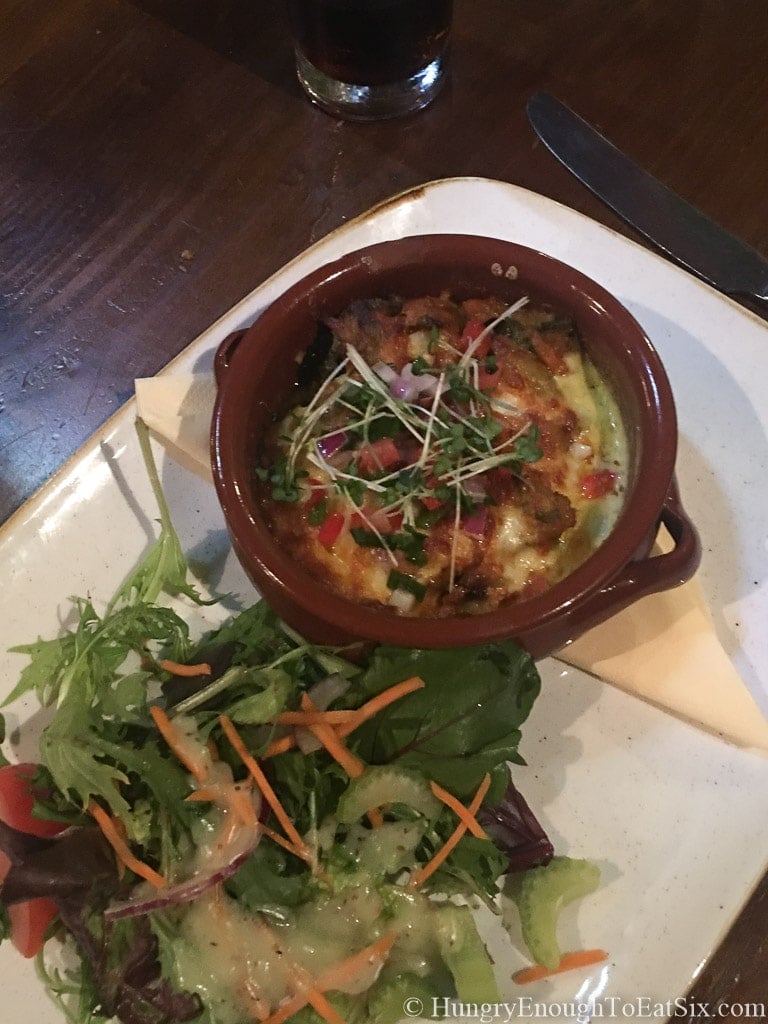
All of the food warmed us through and was very comforting on that cool night.
Our desserts included homemade bread and butter pudding and a slice of apple pie. When I received my apple pie I could see immediately that it was unlike the cinnamon-heavy, classic apple pie recipe of home.
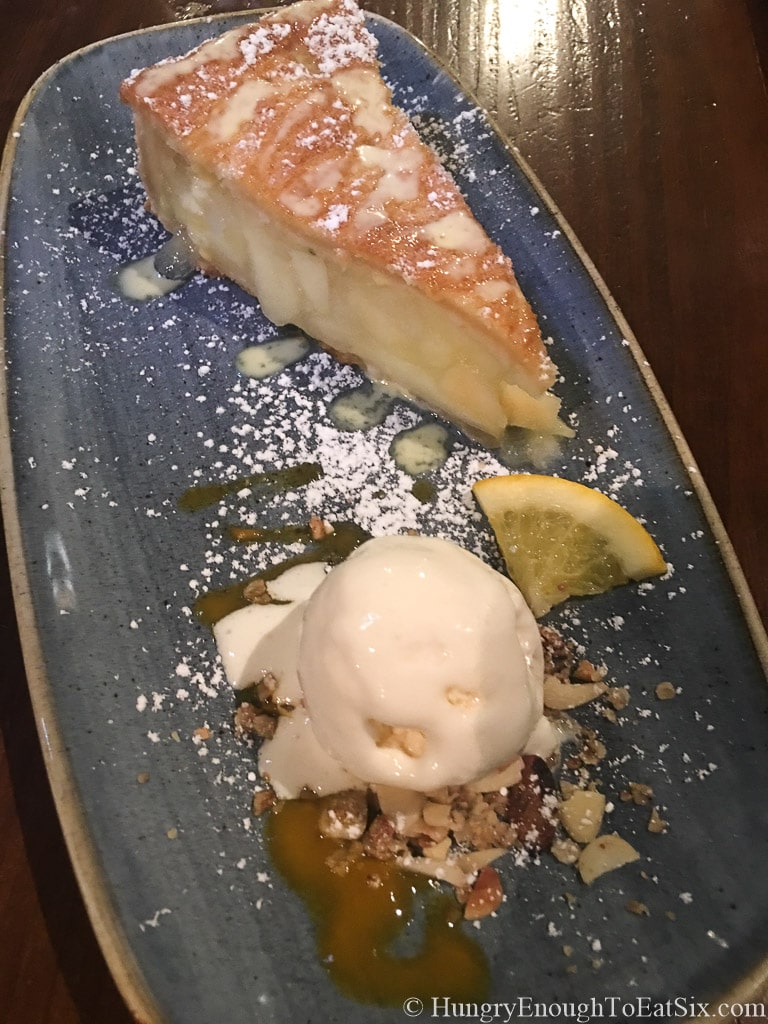
This crust had a texture almost like a soft cookie and the apples were white and thick inside. The overall taste was of tart apples and lots of vanilla. It was really nice variation on the apple pie we were used to!
As we sat finishing our tea and dessert, I felt the cool, damp breeze coming in the open window and watched the falling rain illuminated by the streetlamps. Though we had left home in the middle of a sweltering heatwave, in Clifden it felt like a lovely, late October evening in Vermont. Suddenly I was yearning for fall!
Off to Inishmore
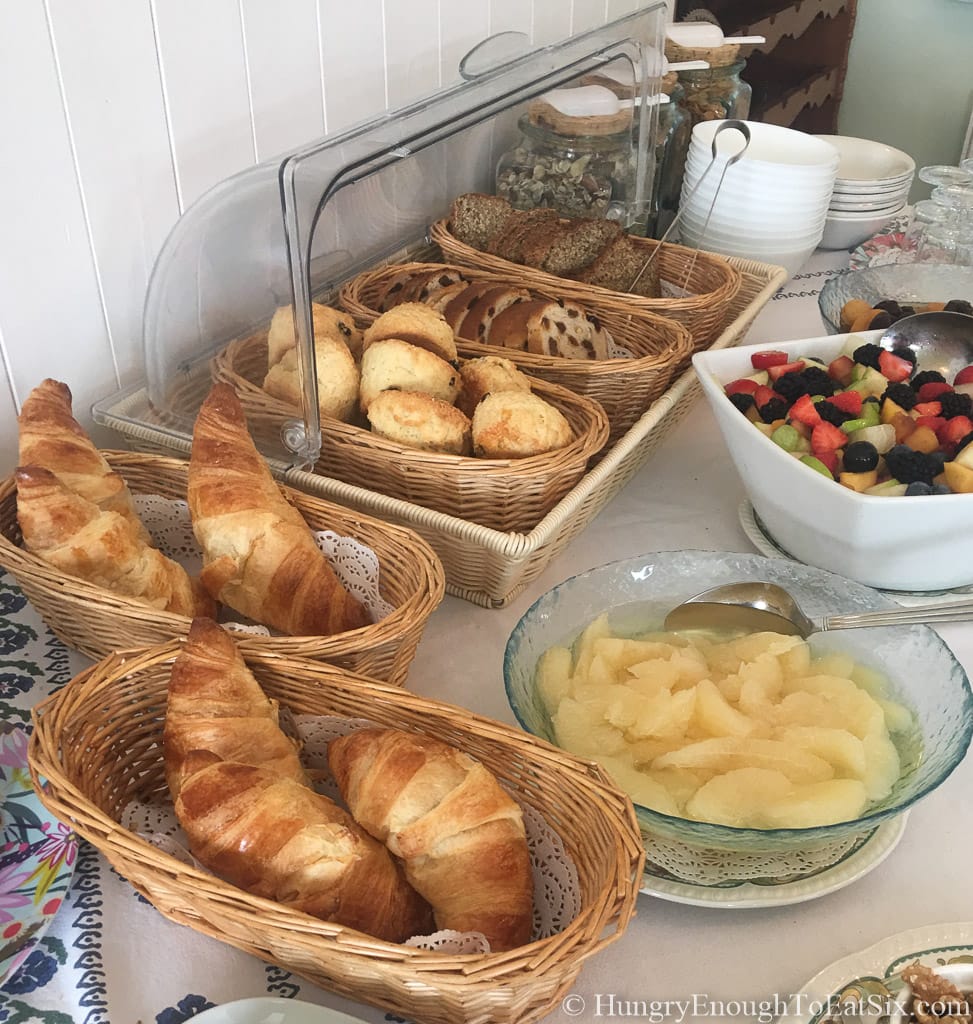
We were up with the dawn the next morning to catch the ferry to the island of Inishmore. We regretted having to leave so early because we missed a sit-down breakfast at Heather Lodge.
The owner very kindly packed bags of freshly-baked croissants, scones, and brown bread with jam for us for the road.

That's me in the driver's seat and my sister in the navigator's seat. On the drive to Rossaveal to get the ferry someone in the car summed up the week's driving to that point as "terroristic." Hmmm.
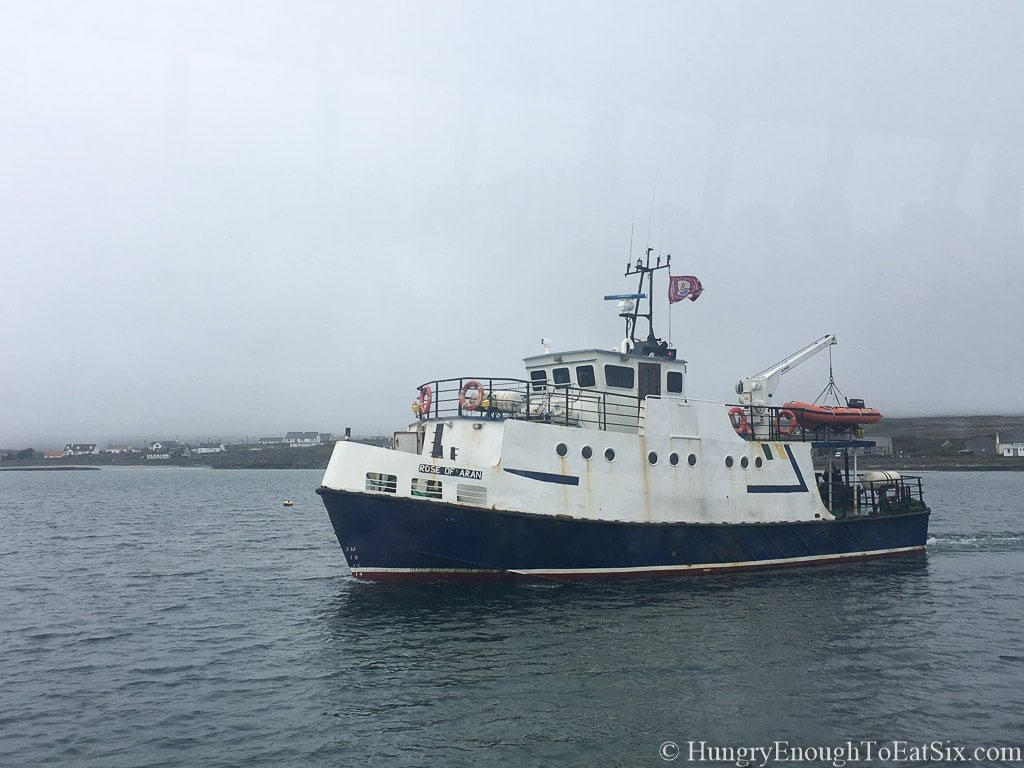
Inishmore (Inis Mór) is the largest of the Aran islands (Oileáin Árann,) sitting at the mouth of Galway Bay. Once off the ferry, we were a little lost as to where to start, but ultimately hopped on a mini tour bus.
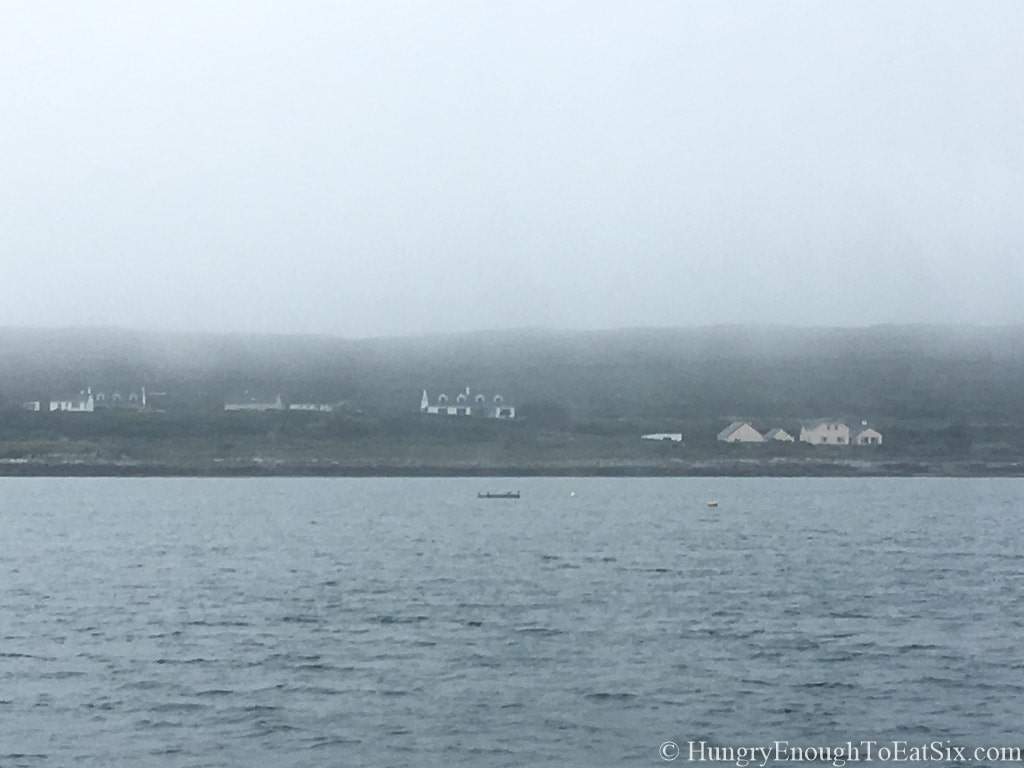
Our driver John, a native of Inishmore, was a wealth of information about the island and life there. He had spent most of his life fishing, but that ended when Ireland's membership in the EU took fishing access away from local fishermen and gave it to foreign fishing operations. Now he does guided tours, expertly navigating the winding, one-lane dirt roads of the island while dodging tourists on bikes, other mini buses, and horse-drawn carts.
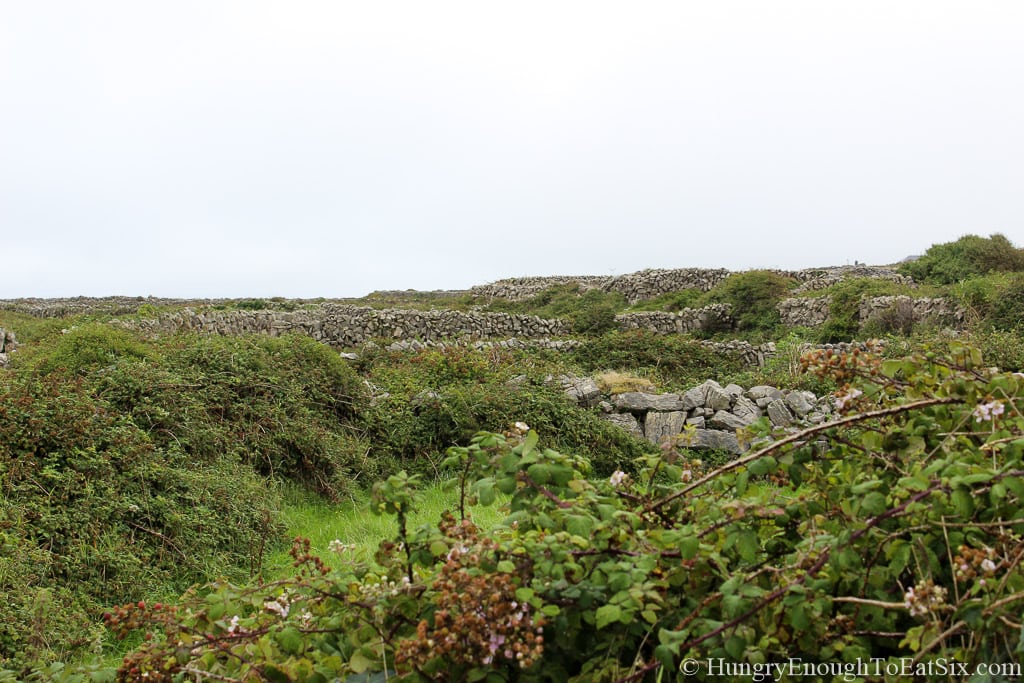
We learned that most of the people living on the Aran Islands speak Gaelic as their first language. At a small college in Inishmore, students learn the ancient language so that it will stay alive for generations to come.

The overall impression of the island was that of stark beauty.
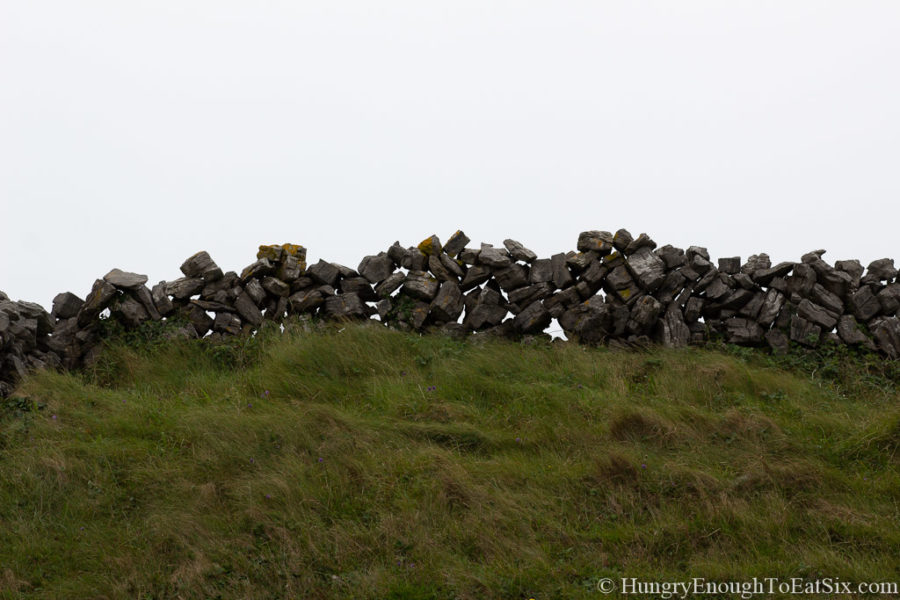
Through the fields, small shrubs, and trees there are dark gray rock walls in crisscrossing patterns. They wind everywhere on the island, and they are no more than 4 feet tall. This means you can see from one side of the island clear to the other! You can see all the houses, cows, sheep, and people walking along the roads, and the ocean on all sides.
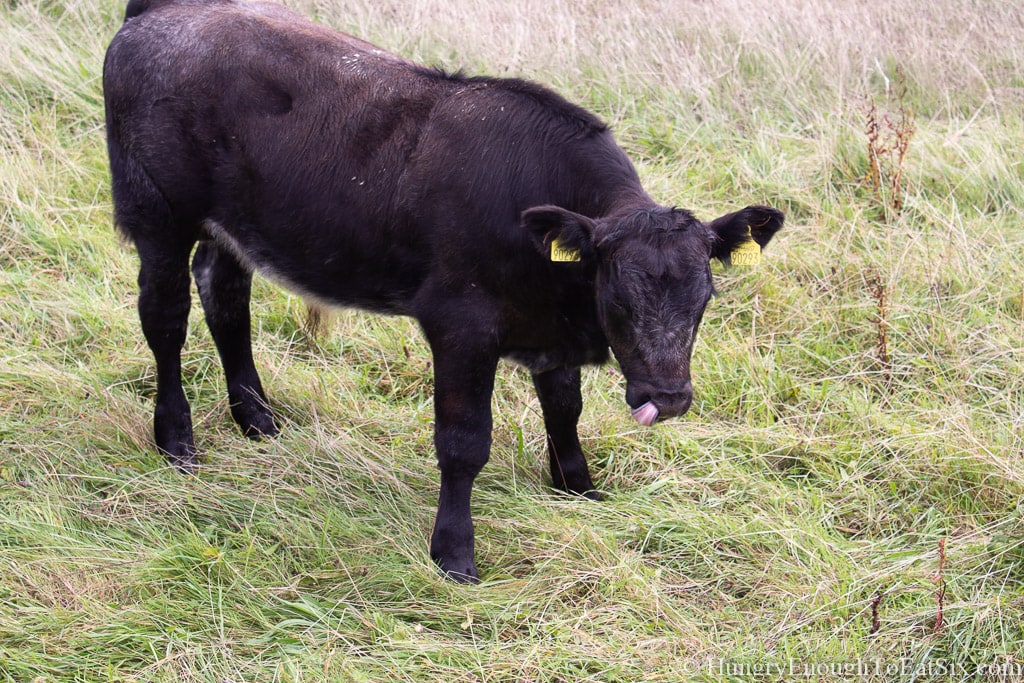
John showed us a house owned by a woman from Boston. He was excited to show us her garden, chuckling at the fact that she grows "punkins". He said the population was around 2,500 only a few years ago but was now down to around 800.
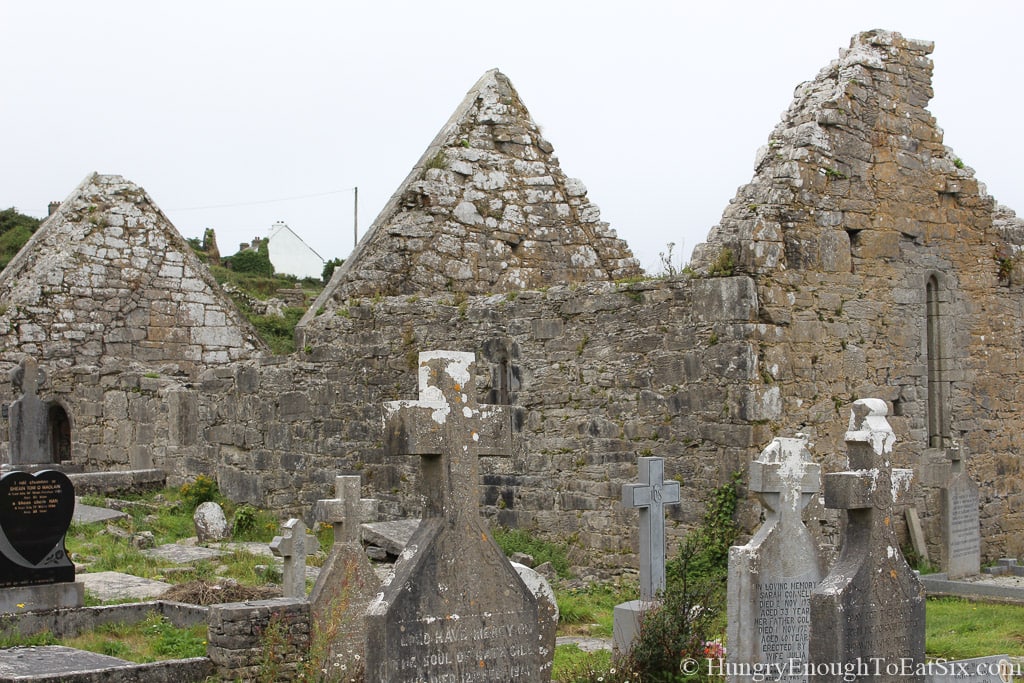
We stopped at the Seven Churches graveyard to explore the remains of... two ancient churches (seemingly a mismatched name!)
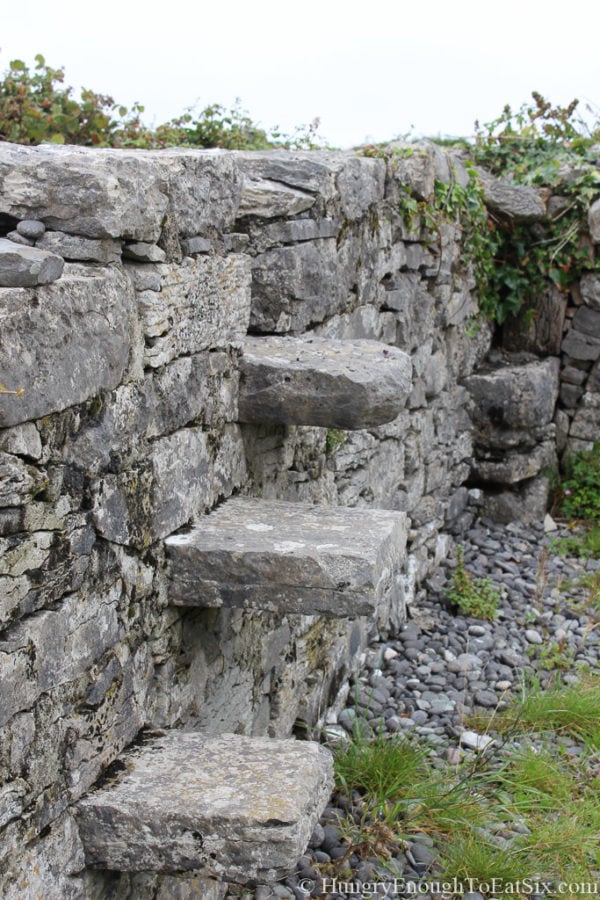
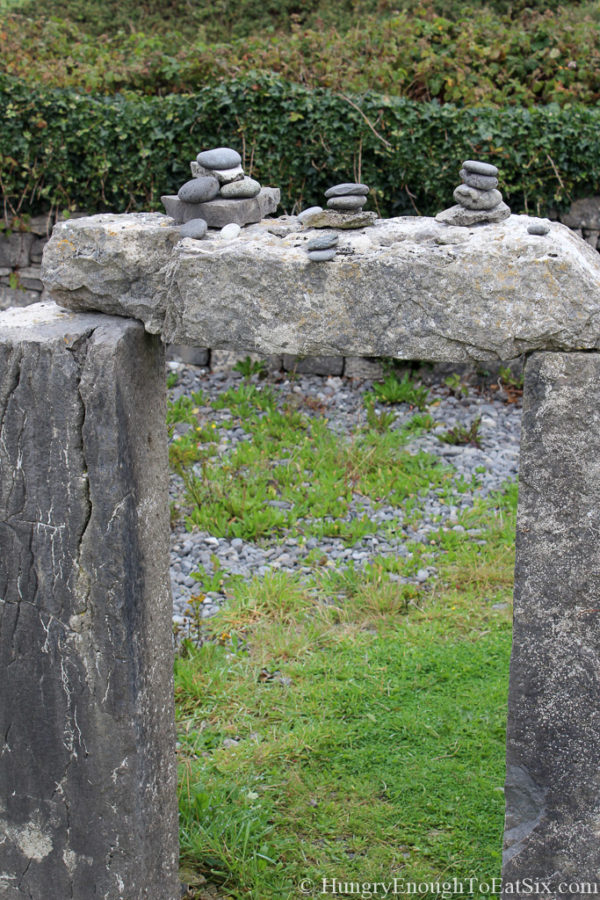
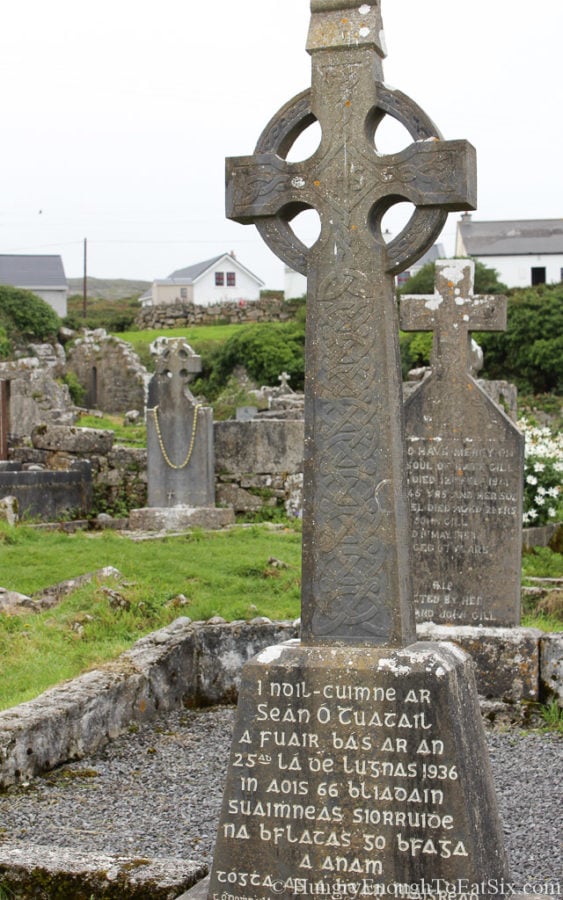
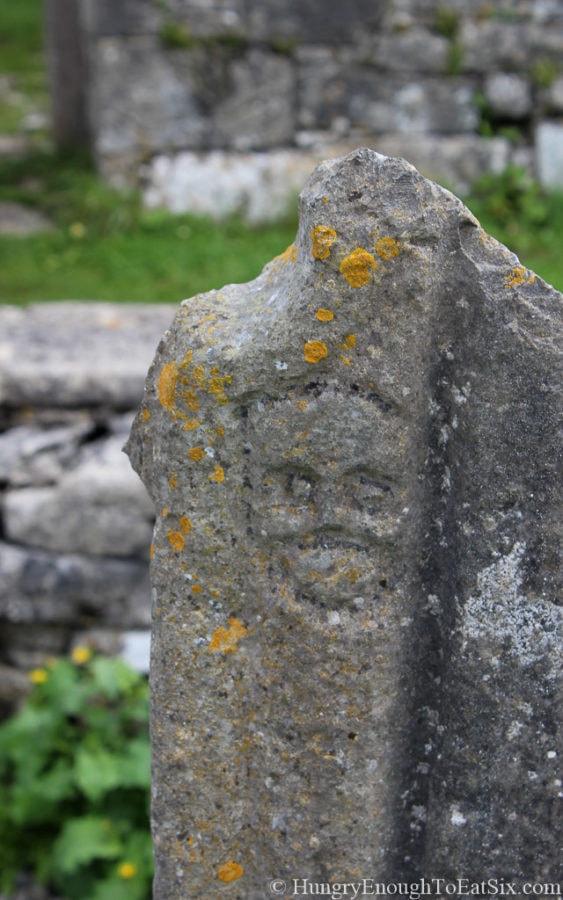
There is a curious mix there: grave sites as old as the 8th century, and as recent as a few years ago.
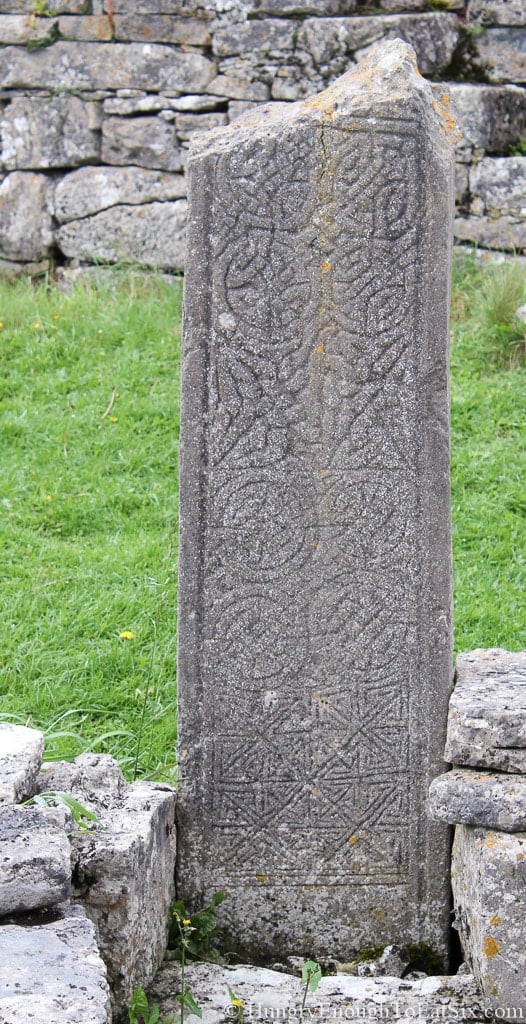
I found some beautiful Celtic carvings on lichen-crusted pillars,
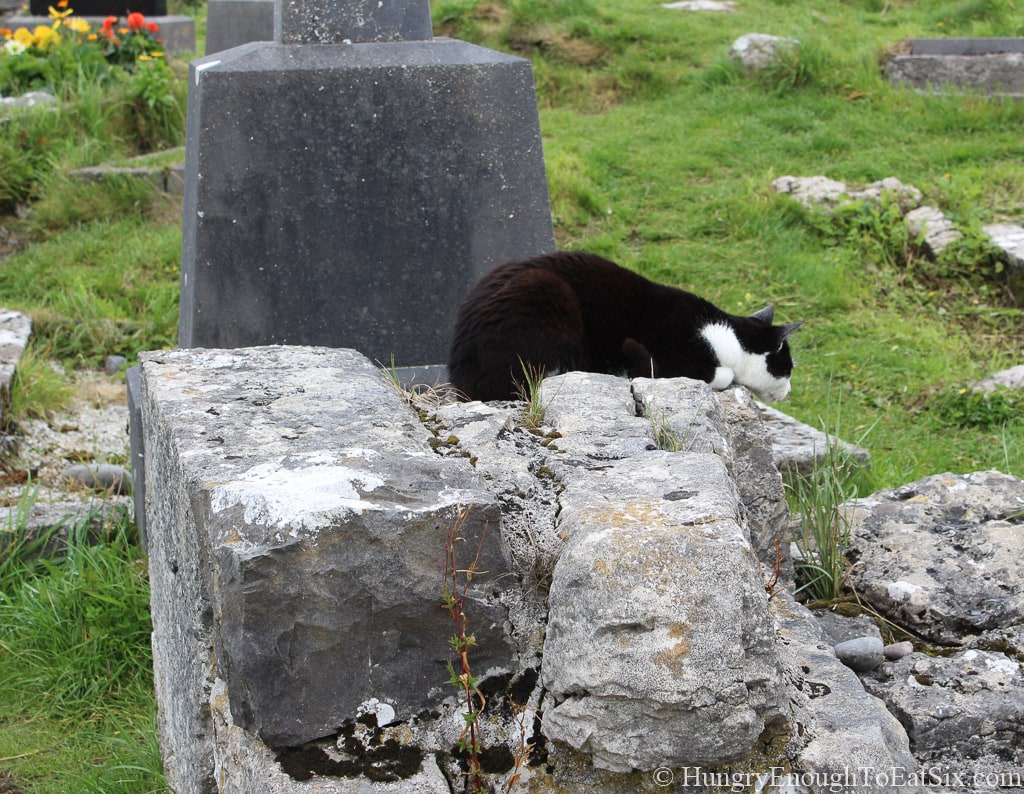
...but what really captured my attention was this sweet kitty! He posed for me briefly before returning to his pursuit of a mouse under a gravestone.
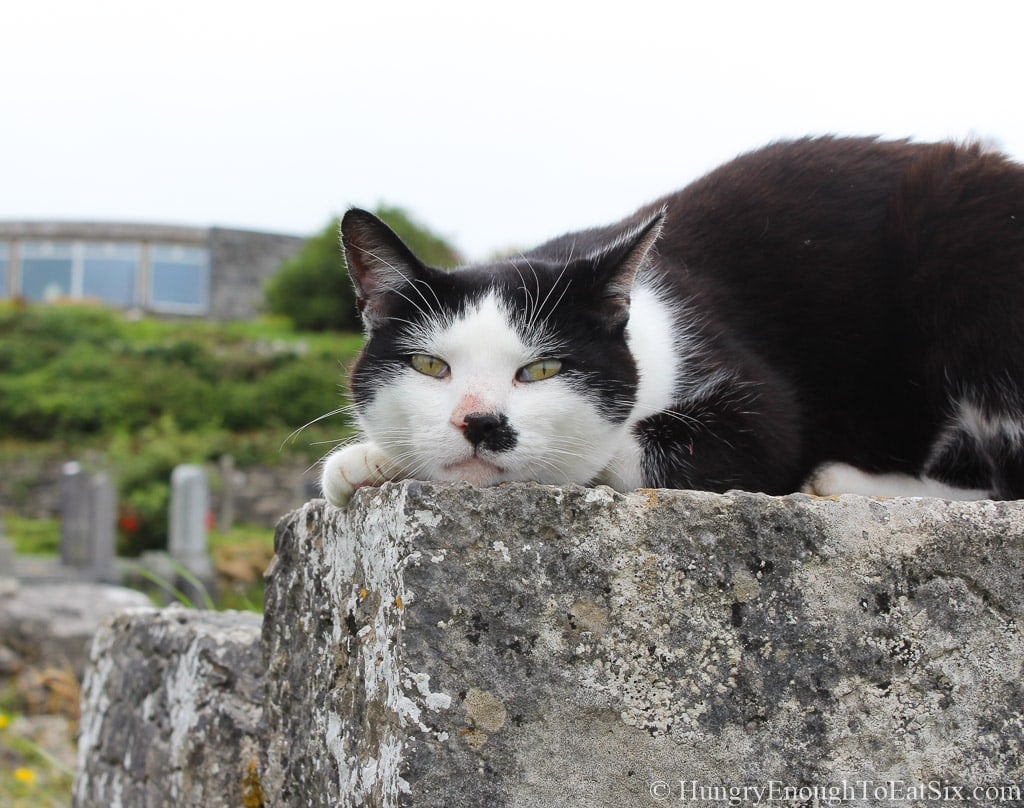
Brown bread and hot soup
Midway through our tour John stopped at a small town square of shops and cafés and recommended we try Tigh Nan Phaidi Café.
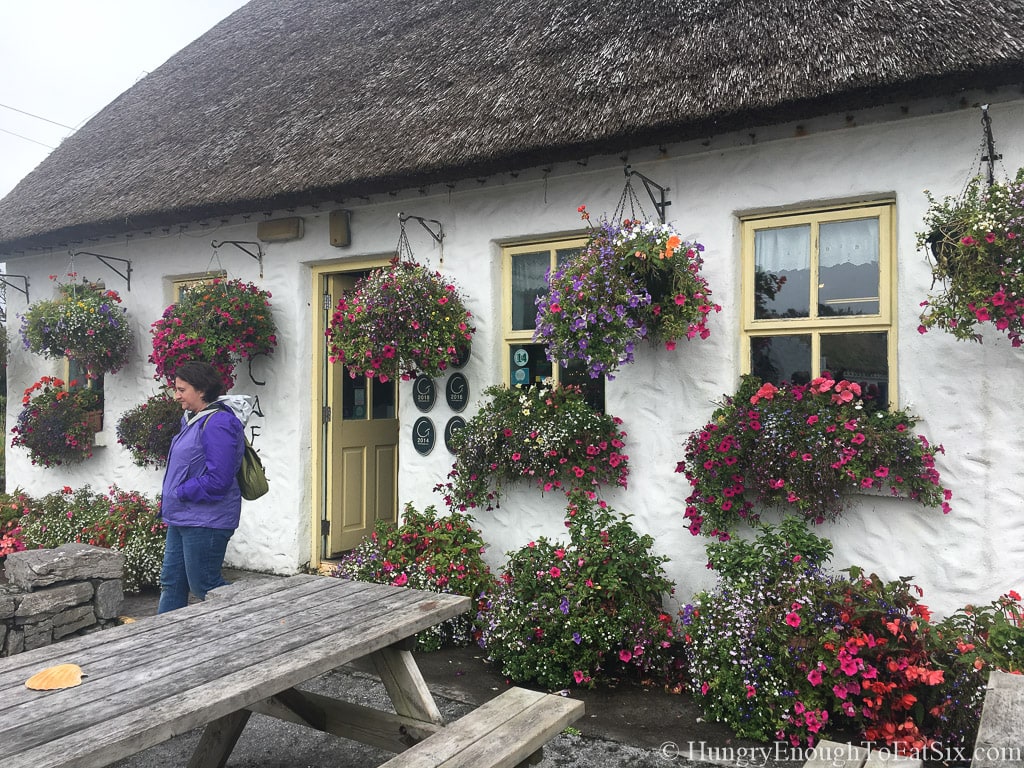
It is a sweet little spot, with flowers bursting from every window box, white-washed walls, and a thatched roof.
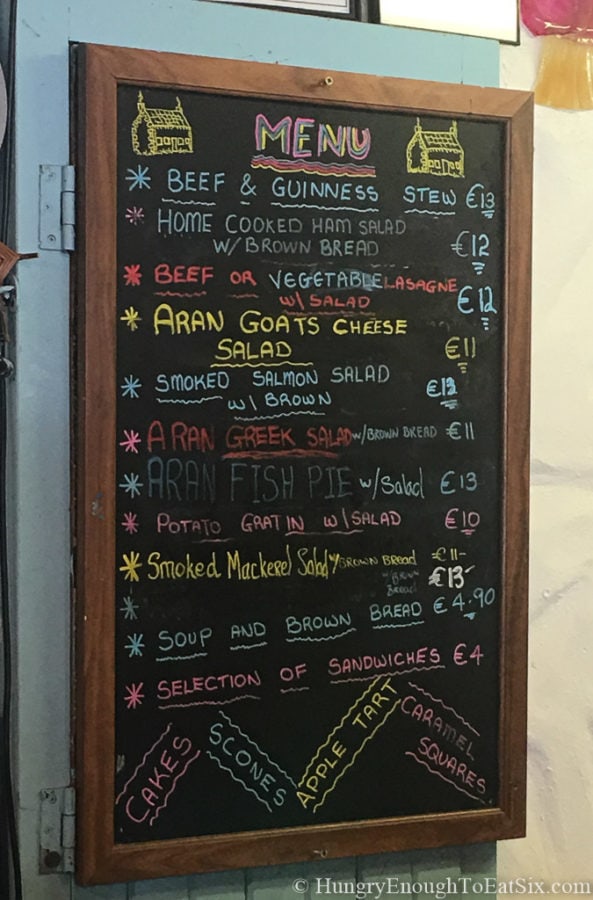
There we had brown bread (of course) and a thick, pureed vegetable soup.
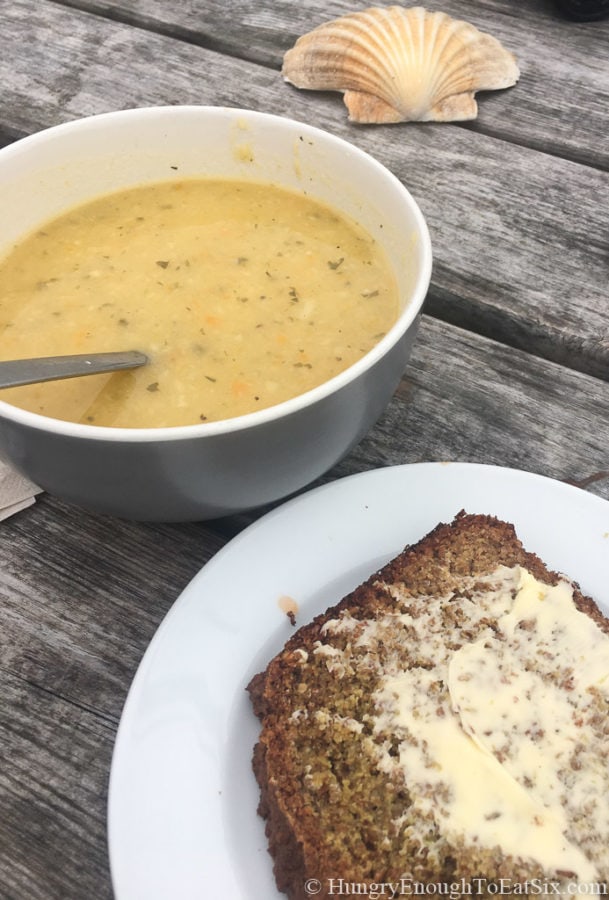
It was a great little pick-me-up. Good thing, because we didn't yet know how long of a trek lay ahead of us to get to Dún Aonghasa fort.

Dún Aonghasa Fort and that cliff
After passing through a courtyard and informational center we came out onto a path. A very long path.
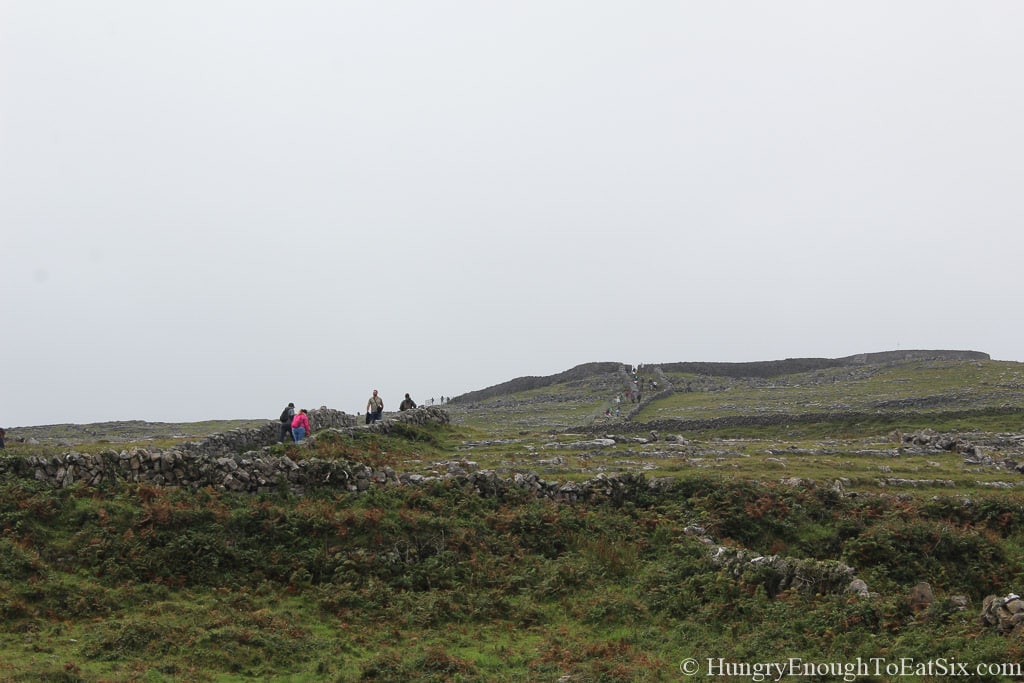
It stretched ahead for a half-mile: a rocky walkway lined with stone walls and scrubby shrubs, leading out to the ancient ring fort at the edge of the sea.
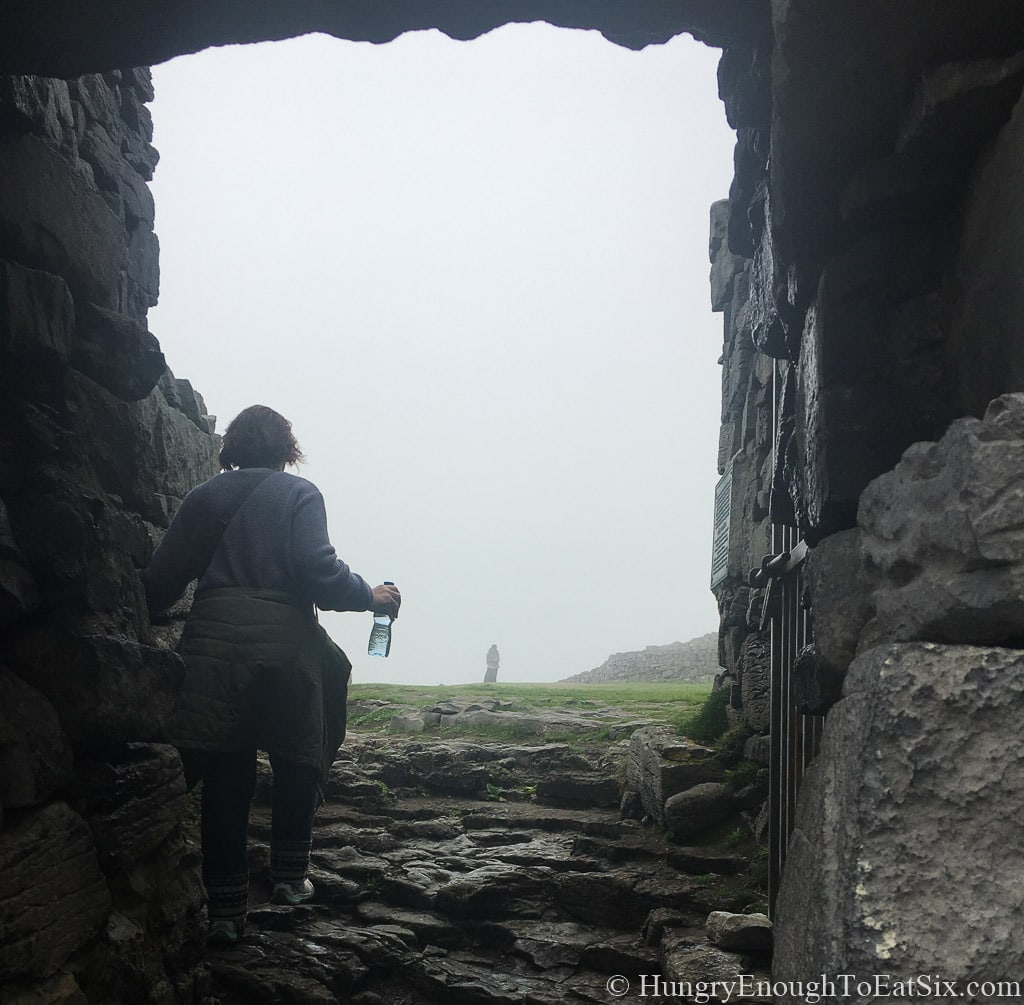
It was impossible to tell from the start of the path what we would find once we got there (and we more or less ran through the informational center so picked up no clues there!)
As we grew closer we began to see sheer cliff walls plunging into the ocean with crashing waves at their feet.
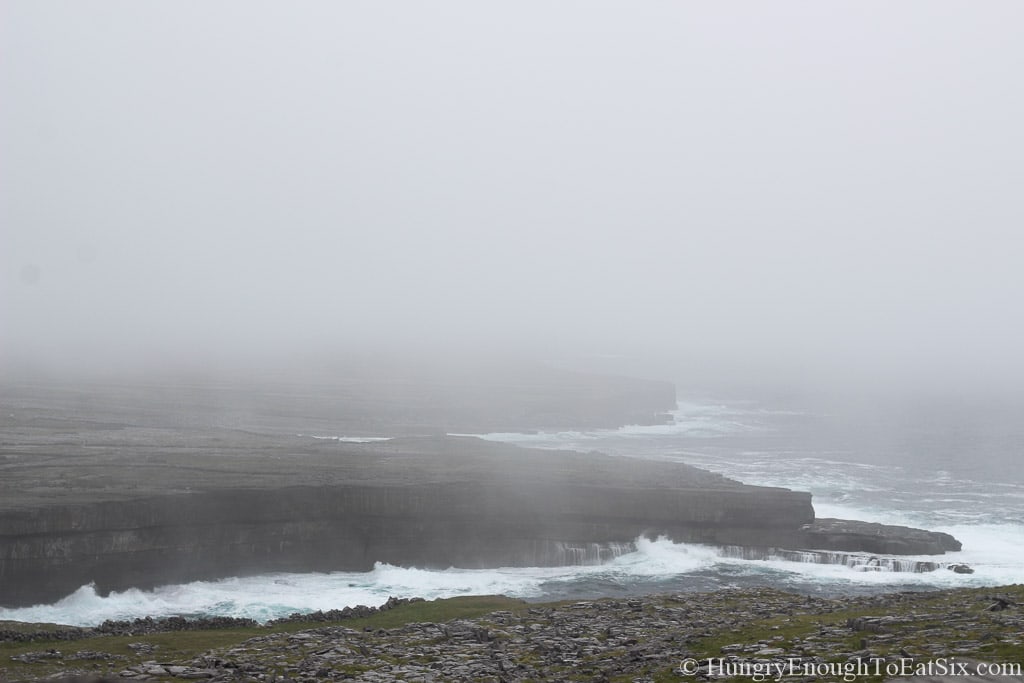
Once through the doorway into the fort, we could really take in the breathtaking views.
The flat rock floor led straight to the cliff's edge, with no fence or barrier of any kind. My mother did not care for that... or for how close we got for photo ops!
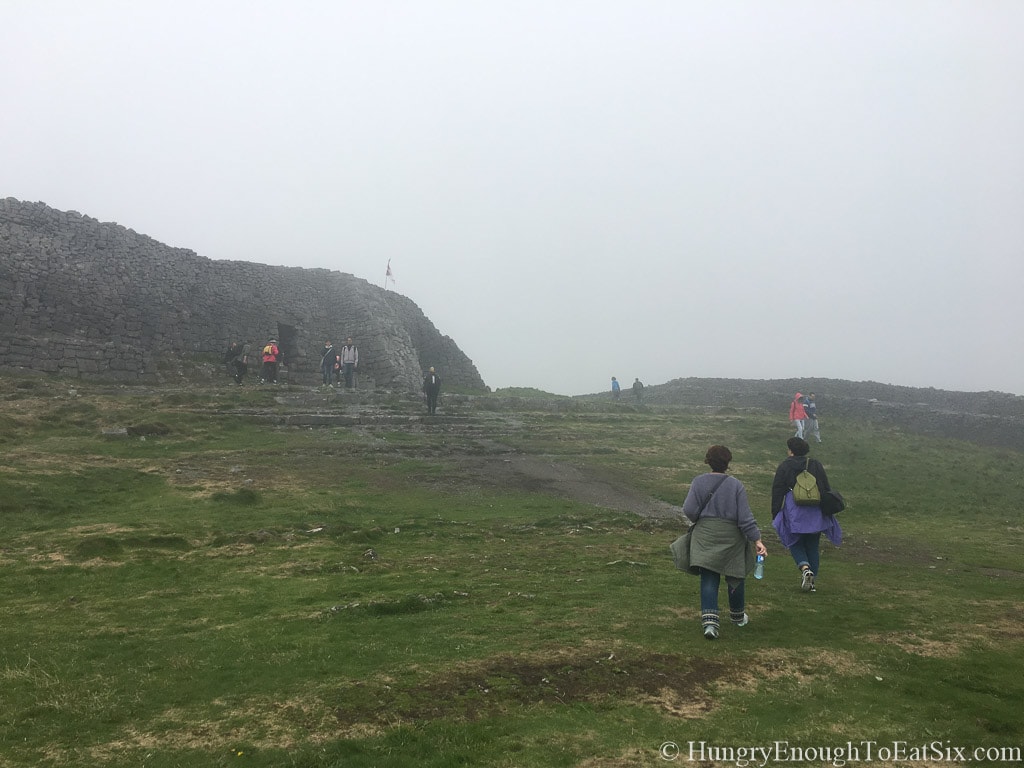
Some folks were even climbing down the walls to get closer to the pounding water. I stuck with this view from above.

Looking out from the edge, the thick fog that day made it impossible to discern where the ocean ended and the sky began.

It looked like I could step off the rocks into the mist and just float away. (I did not try it, though!)
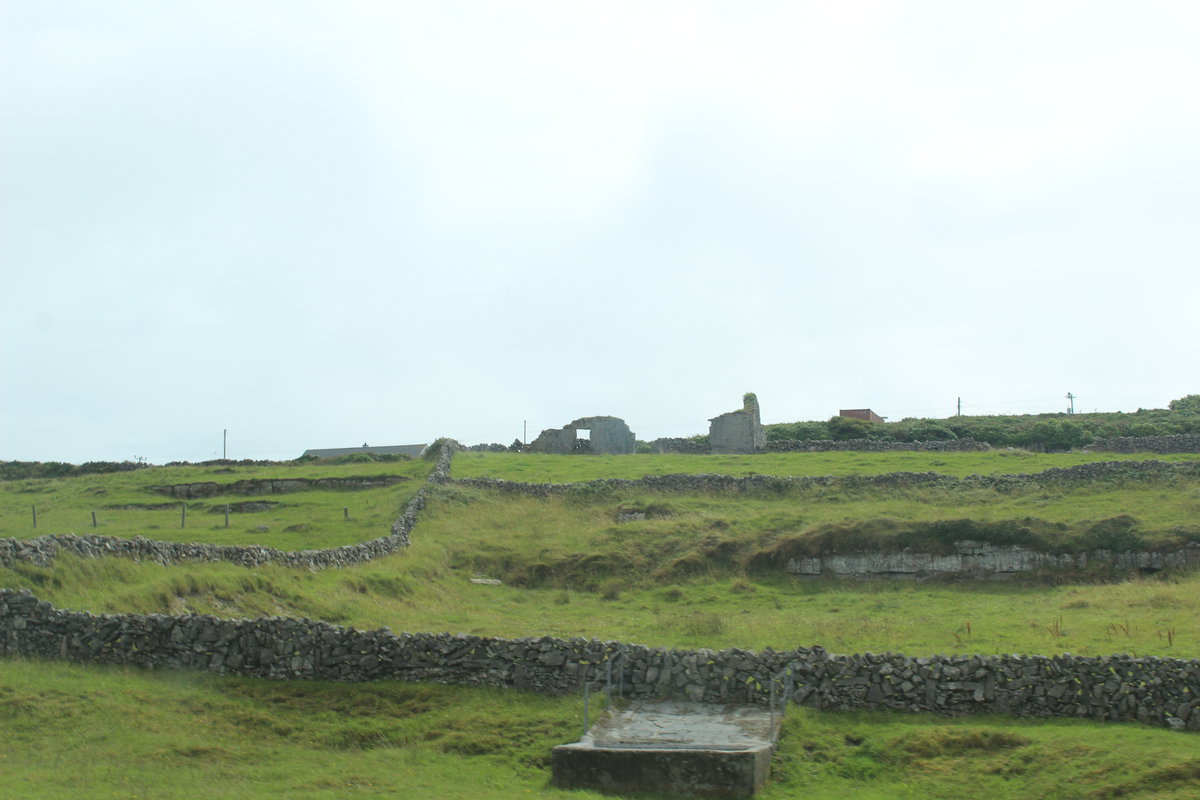
We left the fort and as John drove us back to the ferry landing, he pointed out a few other sites: a goat cheese factory, a tower marking the highest point on the island, and the last few thatched-roof homes on the island.
He had an endearing way of ending every sentence with "like".

We visited a few shops at the landing including the Aran Sweater Market for an armload of Irish wool sweaters. Then we headed back to the mainland.

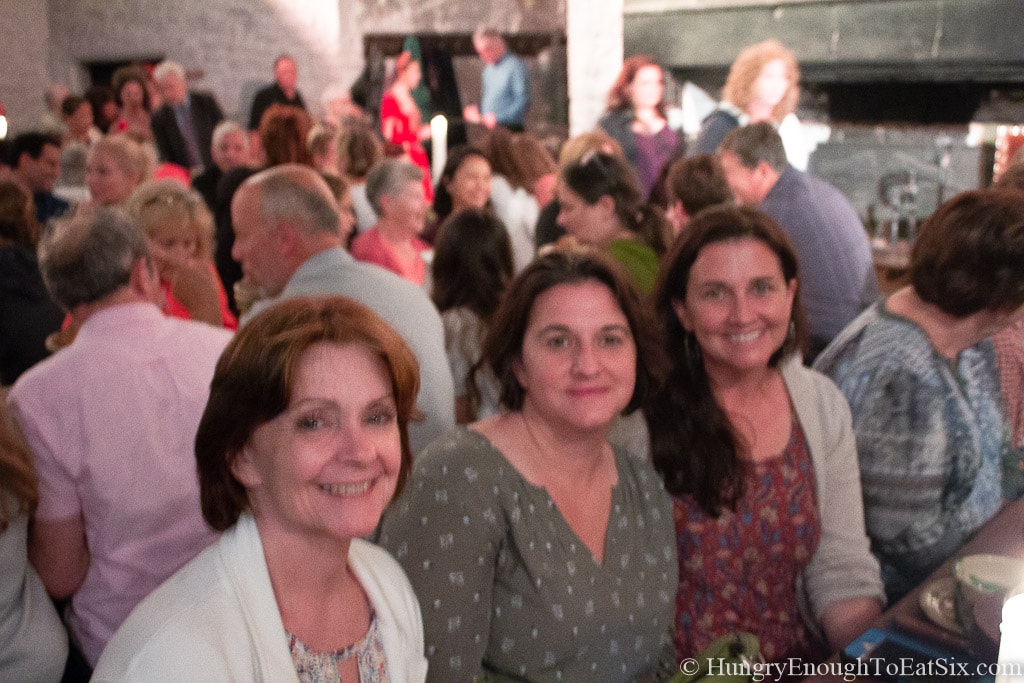

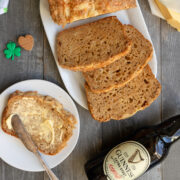

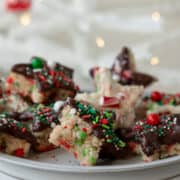
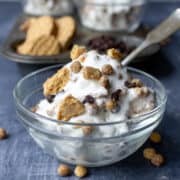
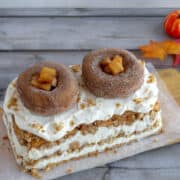
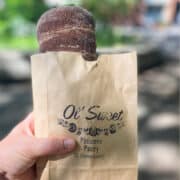
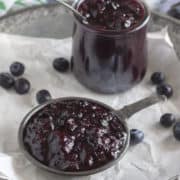
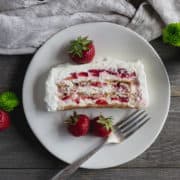
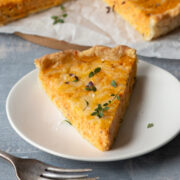
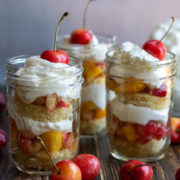
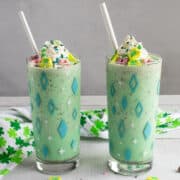
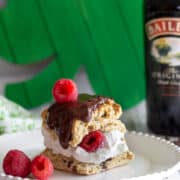
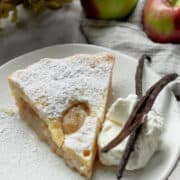
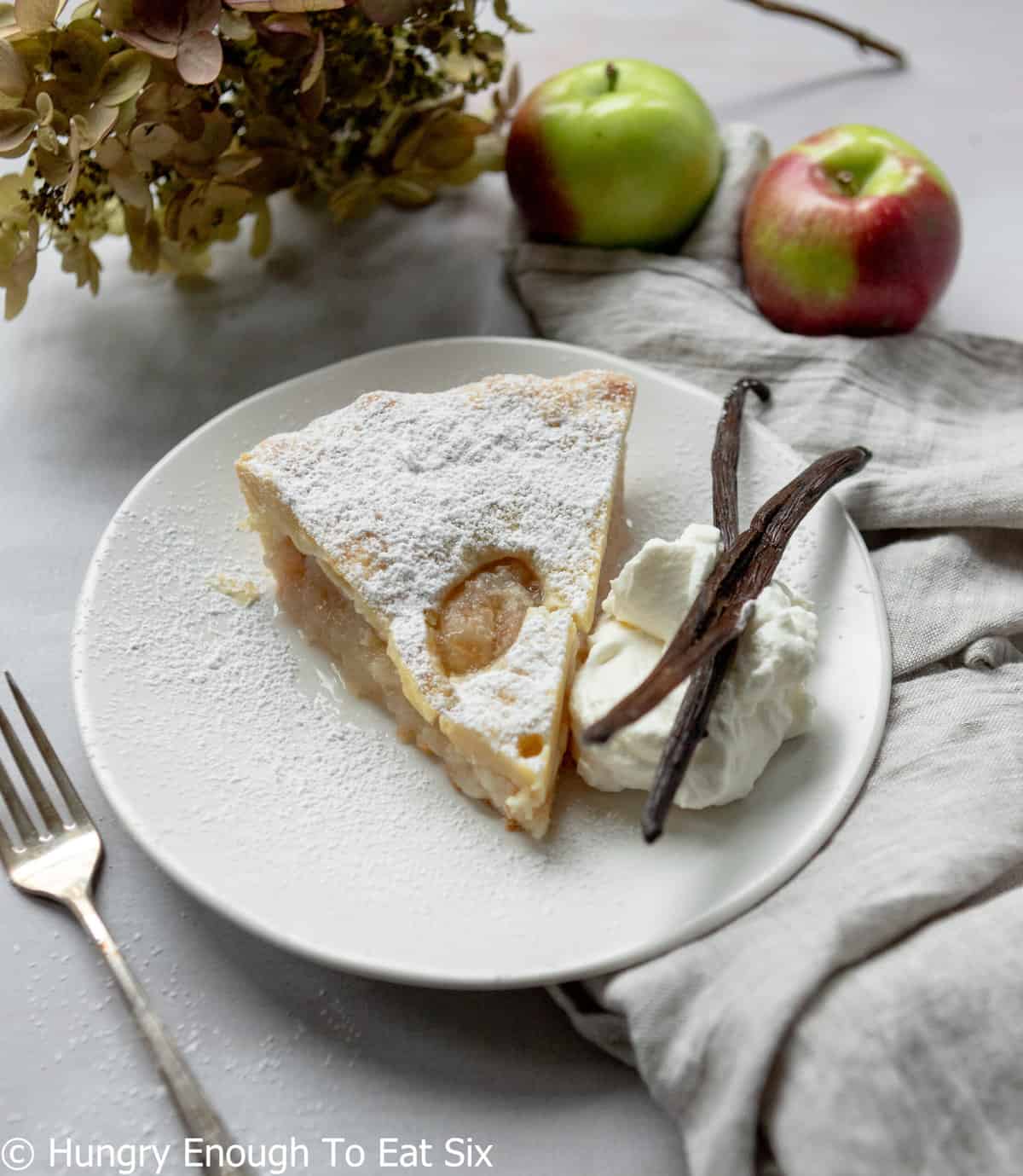
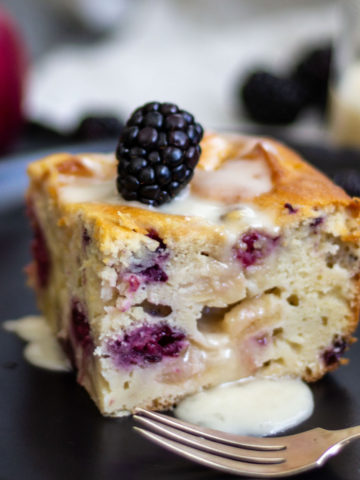
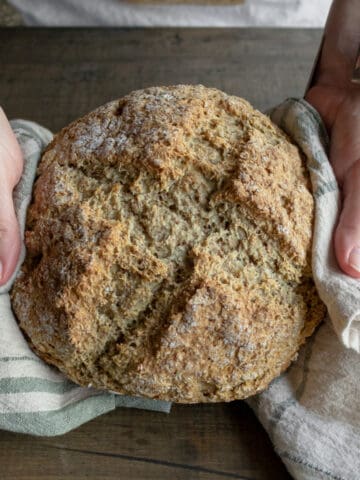

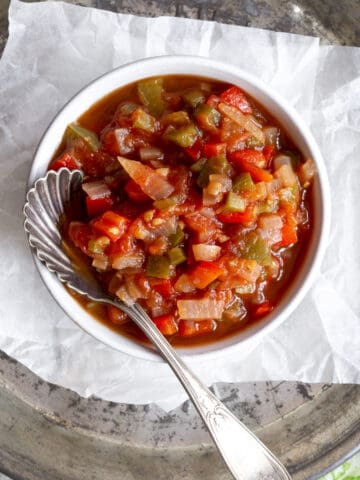
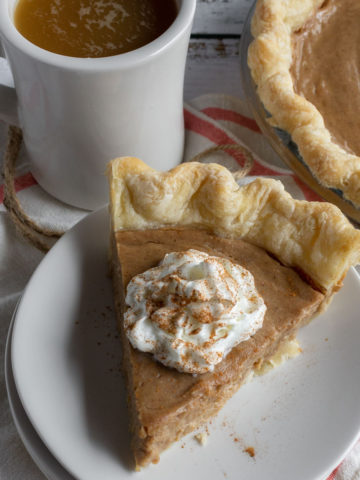

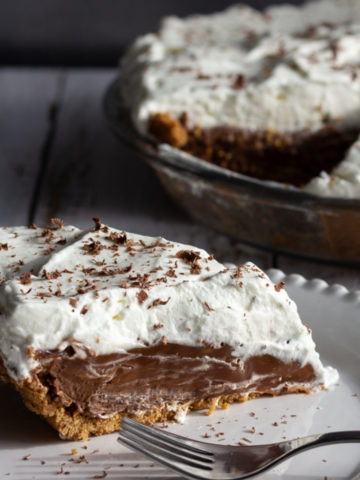
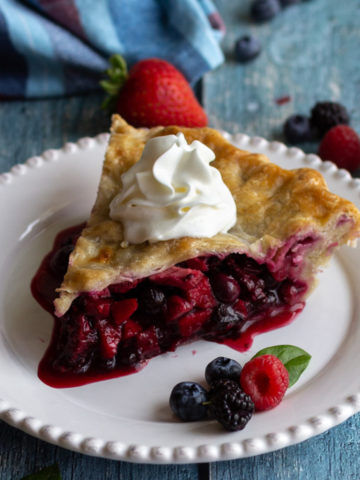
Comments
No Comments